
Best of British: Roman Britain
Discover exactly what the Romans did for us PAGE 74
How

























Discover exactly what the Romans did for us PAGE 74























features
14 IT’S A MANN’S WORLD
Why Olly Mann’s opinion of LinkedIn has subtly changed
e ntertainment
22 Ph ILIPPA g R eg ORy
INT e RVI e W
The historical novelist on her new novel and rescuing women from obscurity
30 “I Re M e M be R”: ce LIA IMRI e
The actress talks about her childhood, famous friends and second chances at life Health
40 M y ST e Ry
STOMA ch PAIN
Getting irritable bowel syndrome under control
Inspire
60 T he RIS e O f T he g ARD e N g RANDPAR e NT
How “granny annexes” are keeping the generations close
68 P h OTO c OMP e TITION
WINN e RS
Meet the people who managed to capture summer happiness!

74 be ST O f b RITIS h: ROMAN b RITAIN
It turns out that the Romans did quite a lot for us, as these amazing locations illustrate
84 h OW TO bec OM e
A b ILLIONAIR e
The number of billionaires is going up—and the secrets of their success may surprise you travel & a dventure
92 TRAckINg The SALTIe S Journeying down under to uncover the many mysteries of the saltwater crocodile

“Wh AT h AVe T he
ROMANS e Ve R DON e f OR u S?” John Cleese famously asked in Monty Python’s Life of Brian. The answer is, “Quite a lot, actually,” as a quick scoot round the UK reveals. This month’s “Best of British” goes beyond Hadrian’s Wall to uncover some of the lesser-known sites—turn to p74.
National treasures of a different kind are profiled in our two interview features: namely, Philippa Gregory on p22, who discusses her best-selling historical novels; and Celia Imrie (p30), who looks back on a glittering, 40-year career on stage and screen. Elsewhere, on p84, there’s guidance on how to become a billionaire (no, really), while our three-part series on care continues with a look at “granny annexes”—all is explained on p60.
Finally, thanks to everyone who submitted to our photo competition! We had great fun going through the many entries, and you can see the final choices made by photographer James Eckersley on p68.
 Tom Browne
theeditor@readersdigest.co.uk
Tom Browne
theeditor@readersdigest.co.uk
facebook.com/readersdigestuk
twitter.com/readersdigestuk
pinterest.com/rdigestuk
google.com/+readersDigestuK1
























EDITOR-IN-CHIEF Tom Browne
ASSISTANT EDITOR Fiona Hicks
DIGITAL EDITOR Mandi Goodier
ASSISTANT DIGITAL EDITOR Anna Walker
ART DIRECTOR Yvey Bailey
GRAPHIC DESIGNER Richard Cooke
ADVERTISING DIRECTOR Simon Fulton
simon.fulton@readersdigest.co.uk 020 3701 5936
ADVERTISING ACCOUNT DIRECTOR Mike Allen
mike.allen@readersdigest.co.uk 020 3701 5935
CEO Gary Hopkins
CHIEF OPERATING OFFICER Julie Leach
PARTNERSHIPS MANAGER Maggie Champion
TRUSTED MEDIA BRANDS INC (USA)
President and Chief Executive Officer
Bonnie Kintzer
Vice President, Chief Operating Officer, International Brian Kennedy
Editor-in-Chief, International Magazines
Raimo Moysa
For all subscriber enquiries, please use the customer services number below
WE PAY...
£50 for the star letter and £30 for regular letters.
Email readersletters@readers digest.co.uk or go to readers digest.co.uk/contact-us
WE ALSO PAY...
£50 for the true stories, anecdotes, jokes in Laugh! and You Couldn’t Make It Up…, and contributions to end-ofarticle fillers and My Great Escape.
Email excerpts@readersdigest.co.uk or go to readersdigest.co.uk/contact-us
We cannot acknowledge or return unpublished items or unsolicited article-length manuscripts. Do not send SAEs. Article-length stories, poetry and cartoons are not requested.
Contact Customer Services for renewals, gifts, address changes, payments, account information and all other enquiries. Call 0330 333 2220* or email customer_service@readersdigest.co.uk
Reader’s Digest is also available in audio and accessible etext editions from RNIB Newsagent, for blind and partially sighted readers. Call the RNIB Helpline on 0303 123 9999 or visit rnib.org.uk/newsagent
Visit readersdigest.co.uk or write to: Reader’s Digest, PO Box 7853, Ringwood BH24 9FH. UK: £45.48 a year. Republic of Ireland: €61.20 a year. Prices include delivery. For gift subscriptions, contact Customer Services.

Love it or hate it, the scary season is back! We’ve got your every festive-food need covered, from tasty pulled-pork recipes to delicious hot drinks and creative candies for the little ones. Whether you’re planning on handing out sweets to trick or treaters, or nestling down and treating yourself, there’s something for everyone.
Visit readersdigest.co.uk/halloween-treats for the recipes.
Autumn is well and truly here, and what better way to celebrate than getting cosy and indulging in a good book? The esteemed Man Booker Prize announces its winner this month—and with a particularly accomplished shortlist, the competition is really tight.
We’re giving you the chance to get your hands on the full Booker Prize shortlist, which will keep you busy until Christmas and beyond! Find all details readersdigest.co.uk/booker-prize-competition
These creepy critters have donned their scariest costumes to give you a Halloween fright.




















We pay £50 for Letter of the Month and £30 for all others
Reading “How to Talk to Your Doctor” made me stop and reflect. Back in the day, the family doctor knew everything about you: your occupation, financial circumstances, problems. Usually, his surgery was in his own house. His wife would be his receptionist. His children would be sitting on the waiting room floor scribbling away in their colouring books.

The doctor would look at your hands, then check your eyes. He’d ask, “How are your bowels? Do you feel tired? Where does it hurt?” and so on. Because he knew all about you, he’d soon suss out the problem and deal with it. You weren’t expected to give an opinion— in fact, such forwardness was frowned upon.
How times have changed! With fewer doctors and more patients, we have to take control of our bodies. Our overworked doctors need all the help they can get.
I took great interest in “Adventures in the Lakes”. I read Swallows and Amazons as a child and, as Kelly Macdonald states in her interview, the book reflects a childhood filled with carefree fun and adventure, when children played outside.
PHILIPPA SAMPSON, DevonI think today’s children will enjoy the story as much as the children of the past did—and it may also help them to realise that there are other ways of having fun other than just sitting at a computer or an Xbox for hours every day.
GERALDINE MILLER, LiverpoolSitting in the lounge recently, just after breakfast, I was thankful I had something interesting to read in the form of a small pile of old editions of Reader’s Digest, which I’d received as a gift a few months ago while recovering from a fall. I picked up a copy dated June 2010.
My daughter was busy in the garden when suddenly she yelped and swore.
“What’s wrong?” I asked.
“I’ve just had the biggest, hornetlike creature I’ve ever seen land on me!” she said, endeavouring to chase it away.
I told her to hang on a minute while I returned to my Reader’s Digest and hurriedly turned to page 15 and the article “Discover Exotic Garden Insects”. Item number five therein read, “Horntail wasp. Looks like a huge hornet but is, mercifully, harmless.” Fortunately it did disappear without any harm being done—but what a coincidence!
RENEE VON BRATT, North Lanarkshire
I liked “If I Ruled the World” with Ben Miller—and I agree with his remarks about banning bottled water.
Bottled water is, of course, big
business. In terms of sustainability, however, bottled water is a dry well. It’s expensive, wasteful and distracts from the brass ring of public health: the construction and maintenance of safe municipal water systems.
My alternative to bottled water is using a stainless-steel thermos. And for those of us who don’t like the way tap water tastes, inexpensive carbon filters will turn most tap water into a sparkling refreshment at a fraction of bottled water’s cost.
NED HEWITT, WrexhamYour Money item “Bursting the Bank of Mum and Dad” struck a chord. Once I’d got married and moved out, I had no financial help from my parents at all. But two of my kids— who are 24 and 26—still live at home due to tight finances.
Stricter mortgage criteria and rising rents, coupled with higher unemployment, mean more and more young adults are staying in the family home. Despite the fact that I love having my children around, there’ll hopefully be benefits when one day they’re able to leave. It’ll be nice to get some space back, even though I shall miss them.
LEONA HEXMAN, Denbighshire
































In the wild, a female lobster can lay an astonishing 20,000 eggs, which need about nine months to hatch. Unfortunately, only a handful of these lobster babies survive to maturity. To stabilise the European lobster population in the North Sea, the Alfred Wegener Institute for Polar and Marine Research releases hundreds of the young animals into the waters around Helgoland, Germany. They grow from 4cm in length when they’re released up to 60cm, and can weigh up to 13 pounds.
PHOTOS: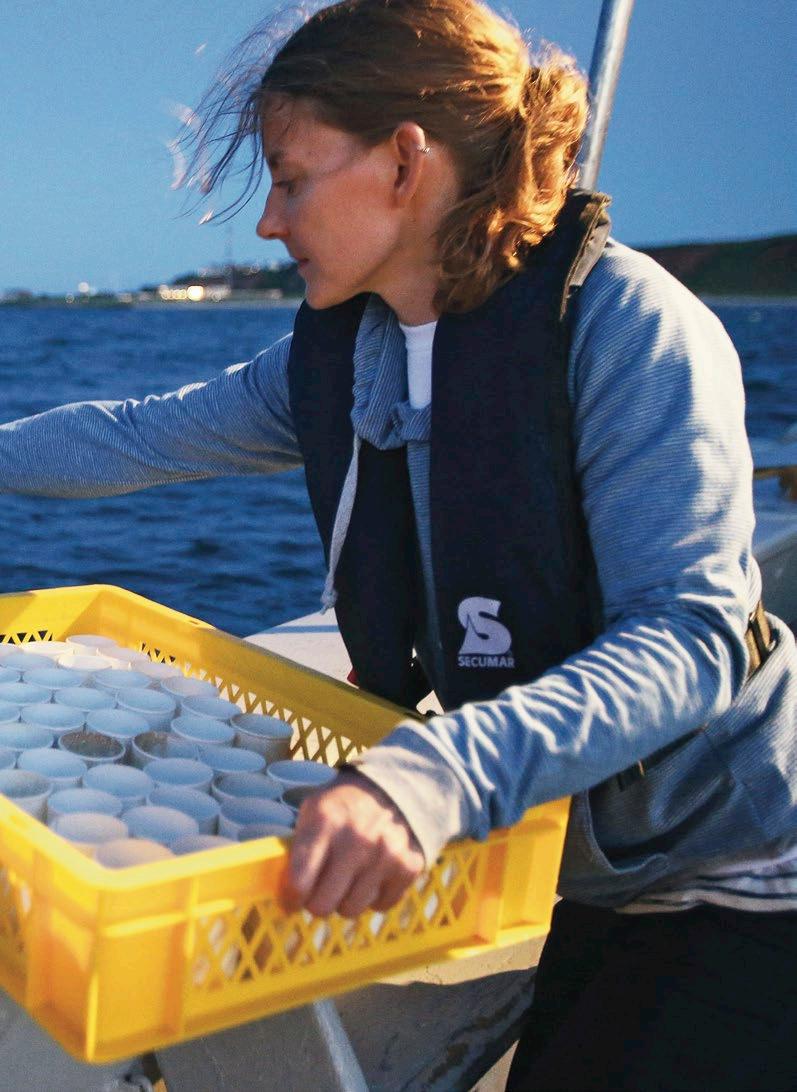
No stranger to social media, Olly Mann nonetheless avoided LinkedIn like the plague. Until now…

Olly Mann is a writer, radio presenter and serial podcaster, with shows including Answer Me This!, The Media Podcast and The Modern Mann
i’m on facebook. Almost certainly, you and I have this in common. Mark Zuckerberg hasn’t yet achieved his stated ambition of connecting the world—but with 1.7 billion monthly users, his company is well on the road to it. So, like me, you probably feel obliged to be included; to feel part of the conversations between your nearest and dearest, despite any doubts you have about the data you’re permitting a corporation to commercialise.
As a meed-jaa freelancer, I’m also on Twitter. I’m nostalgic for the days when I could merely witness live events without a nagging sensation that my opinion need be instantaneously validated by the masses, but, broadly speaking, I enjoy it. It’s fun to engage in lively watercooler chat with like-minded folks worldwide, while actually sitting alone, sipping on a caramel macchiato and tapping away on my laptop.
left to my own devices, that’s probably all the “sharing” I’d do: Facebook for friends and family, and Twitter for those who follow my “work” as a minor public figure. As a tech journalist, however, I’m not left to my own devices—indeed, I’m loaned dozens of devices throughout the year, and I’m expected to have sampled social networks on them. The first one I joined, a decade ago, was LiveJournal (it’s big in Russia, apparently), for an appearance on daytime TV in which I attempted to explain to Fern Britton what blogging was (“It’s

a type of website, and it’s a log!” I advised her, ambiguously).
Since then, I’ve reluctantly joined almost every social network that’s been and gone—the music-focused MySpace; the tweenage wonderland
Bebo; the mumsy scrapbooks of Pinterest. I’ve Instagrammed and I’ve Pinged, and I’ve even briefly Google Plussed, which felt slightly less pointless than its predecessor, Google Buzz, and a considerable
improvement on the search giant’s first attempt at social media, Google Wave (which I still couldn’t explain if you put a gun to my head).
Yet there was one major omission from my social-networking repertoire. I had, quite deliberately, avoided LinkedIn. Considering it’s the world’s fourth-largest social network, and therefore regularly making headlines, this was a risky decision on my part: I’ve found myself discussing it on the TV many times, while never having actually used it.
I just couldn’t bring myself to.
Partly because it’s so ruthlessly targeted at big-mouthed business people, I imagined it to be the online equivalent of being at an endless networking lunch, where wannabes shower you with business cards. And then there were the pestering emails. You know the ones: “BALD MAN YOU ONCE MET AT A PARTY HAS SENT YOU AN INVITATION TO JOIN LINKEDIN!”
I was being petty: deep down, I realised such persistence was an automated process. But I was resolute: I wouldn’t join LinkedIn. If the membership consisted of people who’d responded positively to that kind of hectoring, I wouldn’t “connect” with them anyway. Humph!
I imagined LinkedIn to be the online equivalent of a networking lunch, where wannabes shower you with cards
Over the years, I’ve deleted thousands of these. “HE IS AWAITING YOUR RESPONSE!” Well, forgive me, Bald Man, but I’ll make you wait a little longer. There’s nothing more unattractive than neediness.
then, last week, I needed to get in touch with the marketing director of a beer company. I wanted to offer him a sponsorship slot on my podcast, but he had no phone number listed on his website, and he wasn’t on Twitter. My heart sank: the only way to contact him directly was via LinkedIn. So I swallowed my pride. Initially, my fears seemed justified. The first thing the site asked me to input was my “Professional Headline”— a summary of my job—and the example it provided was “Visionary Entrepreneur and Investor”. Ugh! Who would introduce themselves like that? I bet even Richard Branson would leave out the “Visionary”, and he’s designing spaceships!
Then, within minutes of enrolling, people I worked with 15 years ago were emailing me, thanking me for “connecting” with them. Ugh! I did
no such thing! I too had become one of the spammers! My self-hatred ran amok.
But, as the days rolled by, I found myself logging in quite regularly. It’s oddly compelling to discover what my ex-colleagues are up to, and rather refreshing to be in an online environment that’s so clearly about professional life.
It’s also fun to see which jobs the
algorithm is suggesting I should apply for, even though I never actually ticked the box to say I was looking for work. (Press Officer at Renault, here I come.) I was also touched when LinkedIn suggested adding “Social Media” as a “Skill” to my online CV. Who knows, perhaps this last decade of social networking wasn’t entirely pointless, and I’ve learned a marketable skill. LIKE!
This subtle, tender tale was one of thousands submitted to this year’s 100-Word-Story Competition. We’re publishing a commended story every month.
the book he reaLLY wanted to read
each Monday he came to the library, asking for the book. each week she told him, “No, we don’t have it. I can order it, if you like.”
“It’s oK,” he replied every time. “I can wait.”
she wasn’t meant to order books without a proper public request form. but it had been months since she first saw him, his face all grey and forlorn. the next Monday when he asked for the book, she said, “here. It arrived.” he stared at her then with a longing she’d never noticed before.
“No,” he said slowly, “that’s not the right one.”
Alison Powell, Vale of Glamorgan

Alison says: “I often write in public spaces—cafes, libraries, trains, hot-desking suites. Writing can be an isolating practice, and I find it helps me to stay grounded when I’m surrounded by real people. This was written in Bath Central Library, where I noticed a man who came in every day and sat in the same place to read. I made up a life for him in which he was secretly in love with the librarian, and this story came from that!”
Alison will receive a cheque for £50












































































FORD ECOSPORT TITANIUM WITH KEYLESS ENTRY AND START, REAR PARKING SENSORS AND PREMIUM PAINT FROM £NIL* ADVANCE PAYMENT.
TO FIND OUT MORE, VISIT FORD.CO.UK/MOTABILITY OR CALL 0345 60 40 019.
Important Information
O cial fuel consumption figures in mpg (l/100km) for the Ford EcoSport range: urban 34.9-58.9 (8.1-4.8), extra urban 53.3-65.7 (5.3-4.3), combined 44.8-64.2 (6.3-4.4). O cial CO 2 emission 149-115g/km.
The mpg figures quoted are sourced from o cial EU-regulated test results (EU Directive and Regulation 692/2008), are provided for comparability purposes and may not reflect your actual driving experience.
*£Nil Advance Payment available only on Ford EcoSport Titanium 1.5 112PS Powershi Automatic and 1.0 EcoBoost 125PS Manual. Premium Paint includes Premium body colours but excludes Exclusive body colours. Exclusive body colours are available to order, but at additional cost. This programme is subject to the standard conditions of the Motability 3-year Contract Hire Scheme. Full written details and quotations available on request from a Ford Authorised participating Dealer of Motability Operations Limited. Through the Motability Scheme the vehicles are leased from Motability Operations Limited (Registered Company No. 1373876), City Gate House, 22 Southwark Bridge Road, London SE1 9HB. Applications must be received and accepted by Motability Operations Limited between 1st July and 30th September 2016.
drama: I, DanIel Blake This allegedly final film from veteran director Ken Loach sets its sights squarely on the stifling and dehumanising nature of Britain’s benefits system. Set in Newcastle, it follows the title character (played brilliantly by comedian Dave Johns), a widowed carpenter forced out of work by a heart condition, and his friendship with Katie (Hayley Squires), a single mother from London struggling to provide for her two children.


At their worst, Loach’s films can be preachy and simplistic. I, Daniel Blake doesn’t totally avoid this charge, but it also plays to Loach’s strength—namely, a wonderful feel for the lives of ordinary people. Paul Laverty’s screenplay nails those moments that bring characters to life, and the movie as a whole packs an enormous emotional punch.
adventure: swIss army man
This decidedly odd two-hander stars Paul Dano as a man stranded in the wilderness who discovers a dead body (Daniel Radcliffe) and uses it as a multipurpose tool to aid his survival, all the while carrying on (real or imagined) conversations that force him to reassess his life. This divided audiences at the Sundance Film Festival and, despite the fine performances, my patience also ran out long before the end.


biopic: queen of katwe Chess has always been a niche subject in cinema, largely because pushing little bits of wood around a board is difficult to dramatise (although 2000’s The Luzhin Defence is worth checking out). This film, however, efficiently charts the rise of Ugandan chess prodigy Phiona Mutesi (Madina Nalwanga), moving from the slums of Katwe to becoming a Woman Candidate Master in a remarkably short time. David Oyelowo and Lupita Nyong’o also star.



Louis Theroux squares up to Scientology

documentary: my scIentology movIe Louis Theroux’s quizzical look at “the world’s fastest growing religion”, and its chairman David Miscavige, is in keeping with Theroux’s Weird Weekends TV series. As a viewing experience, it’s often as eccentric as its subject matter— at one point Louis hires actors to re-enact key moments in the Scientology story— but it can’t top Alex Gibney’s wonderful Going Clear on the same subject.
thriller: the gIrl on the traIn Paula Hawkins’ debut novel was the publishing sensation of last summer, and here comes the inevitable bigscreen adaptation, with Emily Blunt in the title role and the action transferred from London to New York (it’s a good deal slicker than the original’s commuter-belt drudgery had suggested).
Haley Bennett and Rebecca Ferguson co-star.


the commune* Relationships and individual desires clash in Thomas Vinterberg’s drama.
The London Film Festival: October 5–16
The 60th BFI London Film Festival kicks off this month with Amma Asante’s A United Kingdom (below), the true story of Seretse Khama, king of Bechuanaland (David Oyelowo), and his scandalous marriage to British office worker Ruth Williams (Rosamund Pike) in 1948.


The closing night, meanwhile, is just as tantalising, with the European premiere



of Free Fire, a tense action thriller from director Ben Wheatley and starring Brie Larson (pictured above).
We’ll be providing plenty of coverage of the festival on our website—just go to readersdigest.co.uk/entertainment to check out the latest reviews. And be sure to tune into the October podcast at readersdigest.co.uk/podcast for further festival chat!
requiem by Goat
Celebrity reigns and image is paramount in this current era, so it’s intriguing to find a band that doesn’t play ball. Enter the masked musicians of GOAT.


Drawing on elements of psyche folk, funk and an overall tribal vibe, this is contemporary world music that’s hard to locate. But in their invocation of distant lands, it’s surprising to discover that the band hails from a remote Swedish village seeped in tradition and mystery. With such hippified lyrics as “Brother, I am your sister, you are my brother, we have each other”, this is an album that makes you feel connected in a totally non-digital way. It’s perfect escapism—at least for an hour.
Key tracks: “I Sing in Silence”, “Psychedelic Lover”, “Goatfuzz”
Like this? You may also like: Paul Simon, Can, Mbongwana Star
overlooked record from the past fantasma by cornelius Pokémon, Nintendo, Haruki Murakami—the 1990s saw an explosion of Japanese culture in the UK. Slightly under the radar loomed a genre of music called Shibuya-kei, taking its melodic cue from 1960s pop and a whole spectrum of sonic samples since. Fantasma was (ahem) big in Japan, but did little overseas. Much like his native Tokyo, Cornelius’s music is an amalgam of western cultural references (you’ll find musical nods to both Disney and The Beatles), all given that crazy but pleasing Japanese spin. It’s a little bit Avalanches and a little bit Beck, but most definitely Japan.


On Our Radar newport Food Festival, oct 1. Sample local produce at over 70 stalls.
oktoberfest truro, cornwall, oct 7–8. Combining German and Cornish Culture. St andrews voices, Fife, oct 20–23.
Scotland’s festival of vocal and choral music of all styles.
Having written her 26th historical novel, author Philippa Gregory knows a thing or two about learning from the past— especially when it comes to navigating the challenges of modern-day life
By FIONA HICKS
“We’re more like the tudors than we’ve been for a long time,” says Philippa Gregory. “The Tudor period was a time of intense change, and we’re in a time of intense change. The reformation split England from Europe, and we’ve just taken a decision that’s partly in that direction as well. If you want to read history for its parallels to modern life, there’s a lot to be had from that.”
We’re meeting in the lobby lounge of a swish London hotel to discuss Philippa’s latest novel, Three Sisters, Three Queens. It’s her 26th novel and the eighth of her Tudor Court series —and she lights up when she speaks about the period.
“When Henry VIII split the Church from the control of the Pope, he also cut England off from the Renaissance. There’s a whole change—religious architecture, music and art—that we missed because we were separated from our cultural neighbours. I’d bet that if Brexit turns out to mean Brexit, in the sense of a big separation, we might regret that when we look back —on a cultural basis if nothing else.”
It’s been no surprise that Philippa has considered such ramifications, as her work often deals in the more personal side of seminal events. Since her first novel was published in 1987, the 62-year-old author and historian has carved out a career by putting the spotlight on relatively unknown figures in history: 2001’s The Other

Boleyn Girl put Mary Boleyn (Anne’s Boleyn’s sister) on the map; Edward V’s mother Elizabeth Woodville was the heroine of 2009’s The White Queen, and in this year’s Three Sisters, Three Queens, Philippa shines a light on Margaret Tudor. “Every time I do research for one book, it leads me to another,” she says. “I stayed in the Tudor period not because of a determination to stay in the period, but because I keep finding someone I want to write about.”
These someones are more or less exclusively female. They’re also the

women who have played pivotal roles in the development of our monarchy and our nation, yet are marginalised—or entirely passed over—in conventional history books. How on earth does Philippa find out about them?
“In a way, it’s gloriously ordinary,” she says. “I read loads—everything from unpublished PhD theses to minor essays in periodicals. For Margaret Tudor, I had to read books mostly about her son and her husband simply to find any material about her.”
The result is that Philippa is often credited with giving a voice to women in history—and has even influenced the historical record. This is highlighted by the fact that before she wrote the aforementioned The Other Boleyn Girl (which was subsequently made into a Hollywood movie staring Natalie Portman and Scarlett Johansson), there was more or less nothing written about Mary Boleyn. Now, there are no less than three biographies in print and a simple Google search renders an impressive 406,000 results.
redefining the historical record is a great feat, especially when you consider that Philippa received a mere E grade in her A Level History.
“I think history in schools is insanely boring,” she laughs. “I was bored when I was doing A Levels and I don’t think it’s improved enough. The government feels what we need to do is try and inculcate civic virtue by teaching history. But that’s not history’s role. The only point of studying history is if you find it completely riveting.”
So how would she change its teaching? “Thank God it’s not my job to say!” she exclaims. “But what I’d do is start in the present and go backwards. I’d say to the kids, ‘Tell me about your mum and dad. Tell me about their mum and dad. Where did they grow up? Where did they come from? What work did they
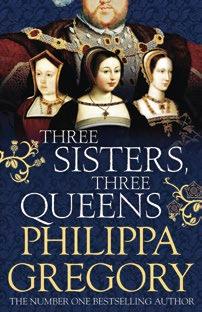
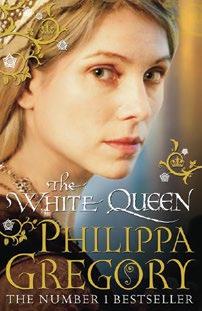
do?’ Then you could deduce, for example, that 80 per cent of the grandparents of that class are coal miners, perhaps because it’s a mining village. Then you get into the history of the mines, the Victorian period and the Industrial Revolution. That way, kids would get why it’s of interest to them—because they’re the sons and daughters of those times.
“One of the biggest-growing areas of historical research is being done by completely ordinary people doing their family history,” she continues. “People are really interested in their own history.”
rediscovering her passion after school, Philippa went on to achieve a degree in history, completed a PhD and has taught at several universities. She’s a fully fledged historian—and yet she’s open about how her work as a historical novelist is different.
“As soon as you talk about someone’s
internal life, you’re speculating, you’re writing fiction. Which, in all fairness, a lot of historians do,” she adds with a smile. But when it comes to character references, Philippa is meticulous in her research. “I feel a sense of responsibility. Especially when they’re relatively unknown women, because this may be the only thing that a reader reads about them. If I’ve picked up a prejudice or a stupid rumour or a dramatic story that probably isn’t right, it’s not fair on them. If I want to be a good historian, then I want to be accurate as to what they were really like—not what other people think about them.”
Impartiality is something she has to be especially mindful of when reading Victorian sources, which are very strong on the Tudor period—if not entirely balanced.
“They were in a patriarchal society just as the Tudors were, so you get an exceptionally biased view of the incompetence of women, the frailty of women and sometimes the stupidity of women. They’re very quick to condemn women for being ambitious or sexually active. So whenever I read a condemnation of a woman, I don’t think, She’s not a very nice woman. I think, She’s done
something the Victorians don’t like. And I know I’m going to like her— because I’m the sort of woman the Victorians wouldn’t like.”
Having sold more than ten million books, Philippa is certainly successful, ambitious and, well, happily married to her third husband—which the Victorians would sniff at.
“Well, I approach the world as a feminist,” she smiles. “I started work shortly after the Equal Pay Act and I was the first woman journalist ever to work in an all-male newsroom. Matters have improved enormously, even in my working lifetime. If Hilary Clinton wins the presidency of the US, we’ll be in a very interesting situation. We’ll have a woman running Germany and therefore very influential in Europe, a woman running Britain and a woman running America. That’s new.
people’s culture but, actually, women’s culture is my culture. And I think part of my culture is freedom of movement, freedom of choice of having babies, and freedom of choice of husband.”
this last point is another issue with which you can make illuminating comparisons to history. Her readers are captivated when some of Philippa’s characters do marry for love, but until fairly recently in Western society, personal choice when it comes to husbands has been low down in the pecking order.
I started work shortly after the Equal Pay Act and I was the first woman journalist ever to work in an allmale newsroom
“Of course, Queens don’t mean that all of a sudden rights for women improve,” she adds. “But if women aren’t active and agents of their own life, then why not? I support women’s issues: the right to safety in the home and outside it, the right to wear what they want and drive the bloody cars that they want.”
She pauses. “I think it’s extremely important to be sensitive about other
“Even as late as the 18th century, the key to happiness was being in the appropriate place in society, being a credit to your family and your country, and being conventional and settled. You don’t marry for love— your family pick out your partner, and you and he get on with it as a sort of working team,” she explains.
Attitudes have certainly changed, but is it for the better? “Well, when you’re in a society that’s had all the luxury the world can afford—living in peace and prosperity—you do get a bit selfish and self-indulgent, and possibly a bit corrupted,” Philippa says. “In the post-Sixties generations, there’s an almost total emphasis on
personal fulfilment and individual happiness. And that’s terribly difficult to achieve. You can get into a steady state financially and socially quite easily—you can buy the house that’s desirable, you can get the right car, you can do all of that— but most people are pretty up and down. You’re going to have blue days whatever happens.”
So in our age of selfies, socialmedia validation and searching for soulmates, what can a person do? Ironically, the key perhaps is to adopt the attitude of the 18thcentury housewife.
“She’d think, I’m not very happy today and that’s a pity, but at least I’ve got a house and a carriage, and a horse and a stable, and a servant to clean the grates. If it’s a hazardous society, steady state is the best you can imagine. To be at peace is such a privilege. To be prosperous is, well...” she says, gesturing to the
ornate hotel interiors, “it’s great. Yet you have to remember there are people not 20 feet from here who are sleeping rough. I personally think we need to share the prosperity— I’d like to live in a generous society.”
We may be far from a perfect society—Brexit or not—but Philippa still thinks it compares well to those in history. When asked in which period she’d most like to live, she doesn’t miss a beat.
“If matters continue to progress well, it would be the future. If you’re going to go back in time and be a rich, privileged man, it’s all great—any period would be really good fun. If you’re a woman, you shouldn’t live in any period but now. In terms of rights and opportunities and prosperity, this is the best we’ve ever had.”
Imagine if password-security questions were oddly nihilistic. A few of these would have you longing for the classic, “What was your first pet’s name?”
“In what year did you abandon your dreams?”
“What is your ex-wife’s newest last name?”
“On what street did you lose your childlike sense of wonder?”
“What’s the name of your least-favourite child?”
“When did you stop trying?”
SOUrCe: tHePOKe.CO.UK

The SEBO X4 PET BOOST delivers outstanding cleaning day after day with ease. However, it has something special up its sleeve. For those situations where you want a bit more oomph to your cleaning, say stubborn pet hair, press the boost button on the SEBO X4 PET BOOST and it will give you a deeper clean and extra pile lifting power.
The SEBO X4 PET BOOST. Tough on dirt.


01494 465533 info@sebo.co.uk

For a chance to win a SEBO vacuum cleaner, enter our monthly draw at: www.sebo.co.uk
Celia Imrie, 64, is one of Britain’s best-loved actresses, having appeared in numerous TV, film and stage productions over the past four decades
…INSISTING ON TYING MY OWN SHOELACES. When my nanny’s mother bent down to help me, I rather spiritedly—or bad temperedly, depending on how you look at it— said, “No! Do it self!” That two-yearold’s independent streak has been the pattern of my life.
…MY FATHER ASKING WHEN I WAS GOING TO BE ON THE “GOGGLEBOX”. He’d wanted me to be a secretary so was a bit sceptical about my acting aspirations. Sadly he died before I got my first part on television—in Upstairs, Downstairs, a programme he’d loved. He was 60 when I was born; the fourth of his

five children. We were a rather noisier bunch than he’d bargained for, but he was a wonderful man, terribly modest. He was a radiologist and patients would come for their appointments to our house. I wish I’d known him more.
…MY MOTHER PLAYING IRISH JIGS AND SCOTTISH REELS ON HER VIOLIN while dancing round the house. She went everywhere on her bicycle and gave wonderful parties. When she wasn’t entertaining she’d wear men’s galoshes and an old hat and mac to feed the chickens. There’s a part of my mother in everything I play.



 Celia aged five with her favourite boy doll, Billy; (bottom) pictured in 1980, already yearning to be in films
Celia aged five with her favourite boy doll, Billy; (bottom) pictured in 1980, already yearning to be in films

Playing Hortense in The Boyfriend, even then singing “It’s So Much Nicer In Nice”; (below) dreaming of the ballet, aged 15
…ALWAYS BEING UP FOR A DARE.
I’ve never grown out of that. When my classmates dared me to brush my long hair over my face and turn my uniform around so it looked like I was facing the back of the classroom, I did. We thought it was hilarious—but the teacher didn’t and forbade me from going to sports day. She knew that would be the worst consequence, as sports day was a great occasion and one that I loved. For some reason, I was very good at throwing the javelin. I’ve still got a strong right arm.
I WOULD BECOME A GREAT BALLET DANCER. I was obsessed and danced like mad, taking my exams for the Royal Ballet School. But they said I was too big and I wasn’t
offered a place. That’s a hard thing for a child to understand—especially for someone who didn’t like to take no for an answer.
I stopped eating and developed anorexia. I spent time in Great Ormond Street and St Thomas’. Looking back on it now, I think, What a terrible waste of life.
…MEETING BILL NIGHY. We were both at Guildford School of Acting— he on the actor’s course and me on the teacher’s course. I’d go and sit at the back of his lessons and got the acting bug. So we’ve been friends for a very long time. It was wonderful to work with him on both the Best Exotic Marigold Hotel films.
…FEELING LIKE MY WORLD HAD COME TO AN END. When my first job as part of the chorus line in the pantomime of Dick Whittington

finished, I wept; even now, I don’t like things coming to an end and I hate goodbyes.
JACKSON. In 1975 I was the understudy and assistant stage manager in a touring production of Hedda Gabler
I took the job partly because I’d never been abroad and we went to Australia, the US and Canada. But mainly I agreed to go because Glenda was such a star.
That was over 40 years ago and now we’re reunited in King Lear at The Old Vic—Glenda as King Lear and me as Goneril. I’m apprehensive but also excited to work with such a wonderful cast.

What a privilege it was to work with her for so many years. She was very loyal to us all and I’m forever grateful to have been in her team. We had marvellous times.
Victoria had a way of capturing our own temperaments within our characters. Once I couldn’t get to rehearsals for Dinnerladies on time and got in a flap on the phone to the stage manager. Victoria must have overheard because the next week my shouting episode was written into the script practically verbatim.
for Victoria
Wood as Seen on TV. It’s the one where Duncan Preston and I are in a restaurant and Julie Walters is our hopeless waitress.
We didn’t get through a rehearsal without collapsing in laughter, but when it came to performing in front of the live audience, we knew everything depended on us not breaking down. If you look carefully you can see Duncan and me biting the insides of our mouths to focus on keeping it together.

…ALAN BATES MELTED MY HEART. He and I had been friends for many years before we played husband and wife in the 2002 TV adaptation of Love in a Cold Climate. We had an easy familiarity that was heavenly; it meant that we hardly had to play at being a married couple —things like ignoring each other at mealtimes came very naturally! I was sort of in love with him for years.
WAS NO LONGER THE WHOLE POINT OF MY LIFE. That happened when my son Angus was born 22 years ago. His father (the
actor Benjamin Whitrow) and I have never been a couple, but we’re really proud of our wonderful son.
Angus is training to be an actor now. I knew his fate was sealed when, aged ten, he played Queen Victoria in his school play. He had to wear lipstick, a pearl necklace and a black veil—that takes some determination and I thought, Well, that’s it then.
. I’ve never liked going to the gym, but when the day dawned for my scene behind the buns I got up very early thinking, Oh dear,
I’d better get in shape quickly. Blearyeyed, I opened the door to find the entire cast down there busy doing all sorts of energetic gym stuff—at 6am. We were all of “a certain age” so were in it together, which helped. And what a wonderful true story—the bravery of the women of the Rylstone Women’s Institute in Yorkshire and the millions they’ve raised for leukaemia research is an inspiration to us all.
…RENÉE ZELLWEGER’S ACCENT IN BRIDGET JONES. At first, none of us understood why they didn’t cast an English girl, but when Renée showed up with her perfect English accent and was utterly adorable, she won us all over. It wasn’t until the wrap party when she came in and said, “Hi, y’all!” in her Texan accent that we realised just how good she was.
…REALISING I HAD TO TAKE BETTER CARE OF MYSELF. In 2005 I collapsed in the street; I’d suffered a pulmonary embolism and was rushed to hospital. Less than a year later I had another one. It was a ghastly time and I’ve got such respect for the doctors and hospital staff who enabled me to survive. I’m now much more careful about my stress levels.
…CAVORTING ON THE FLOOR WITH COLIN FIRTH. Selma Quickly from Nanny McPhee is one of my favourite roles. She was loud and awful, but of course I loved
her—and what could be more fun than having Colin jump all over you? He inadvertently gave me a black eye with his knee and, instead of trying to hide it, I wore it proudly so that lots of people asked me how I got it. How wonderful to be able to reply, “Colin Firth gave it to me.”
…LOVING FILMING FOR THE TWO EXOTIC MARIGOLD FILMS IN INDIA. India is a place people either love or loathe because it’s so extreme. But to me it was a dream job. I don’t like flying so I took a train ride from Udaipur to Jaipur, which was lovely because the trains don’t have any doors and there were so

The

many wonderful sights over that seven-hour journey. I adored everything about the country.
YEAR. I was caught up in the tragedy and saw the horror of people running towards me trying to escape the lorry, which killed and injured so many as they celebrated on the streets. I knew something terrible was happening and fled up a side street.
I have an apartment in Nice and my two novels are set there, so I have
enormous affection for the people, but this was a sombre and unworldly time. The florists of Nice laid a path of flowers along the prom and there wasn’t a gap in sight.
After three days of mourning something wonderful happened when the residents formed a huge human chain and, to clear the prom, passed all the flowers to the bandstand. Now, more than ever, I want to celebrate Nice in my books.
ANOTHER CHANCE AT LIFE. I never stop acknowledging how lucky I am. I’ve met so many extraordinary people who have enriched my life, I have darling Angus and a job I still love doing. As told to Caroline Hutton
Q. What’s the meaning of “Hippopotomonstrosesquippedaliophobia”?
A. The fear of long words.
SOURCE: DICTIONARY.COM
It’s like a good chat with an old friend
We talk books, lms, authors, celebrities and life with the editorial team

Listen for free at readersdigest.co.uk/podcast or search for ‘Reader’s Digest podcast’ in iTunes
You may have reached a stage in life where you know yourself better than ever, can hold your own and know what you want. But do you know how to get what you want? Sometimes, especially when we’re a little rusty in the dating department, we can make the odd faux pas and incur dating mishaps. Try our handy tips to find a more satisfying connection with the right person.

Don’t assume your potential suitor is your female bestie. Yet! Often our date won’t enjoy chatting non-stop about our feelings on the latest Coronation Street plot or what Margaret from next door is doing with her gardenias.
Equally the same applies to you, of course, as you won’t appreciate lengthy discussions on topics that bore you. It’s all about finding common ground and keeping conversation light and engaging—at least in the initial throes of dating!
On the other end of the scale, you may find that you become quieter or more defensive during your dates. Lower your guard and learn to enjoy the date for what it is by lowering your expectations first. Once you start to think of the experience as a passing moment in time and not how it will affect the rest of your life, you’ll start to relax and enjoy yourself more. You’ll find this infectious and most likely find yourself on another date.
If you’ve already tried online dating and found it fruitless, try updating your profile photos with warm and inviting images of yourself. You may both appreciate beautiful scenery and Tom the tabby cat, but your potential dater will respond better to photos of yourself. A wide, natural smile goes a long way!






Find out if you are one of a million Europeans suffering from this
IN THE AUTUMN OF 2014, aerospace engineer Martin Burridge thought he was dying: sudden cramping abdominal pain would drop him to his knees in agony. The Welsh 46-year-old father of two, who had never had stomach troubles before, became so bloated with gas that he couldn’t eat. He lost two and a half stone in six months and had to take two months off work and lie on the couch, unable to move. He feared he had cancer.
• Some days software engineer
Astrid van Vrouwerf-Boers, 30, of Leerdam, Netherlands, became so constipated and bloated that her belly swelled up like a nine-month pregnancy, her abdomen rock hard. Three or four days could go by when she couldn’t evacuate her bowels. She would break out in a cold sweat, feel nauseated and have a sudden violent urge to go, needing to find a toilet. Tests, including a colonoscopy, found nothing wrong.
• For Charmaine Bleakley, 63, of Gloucester, it started in her mid 40s. She had two teenagers at home and a full-time job as an archivist. Suddenly she’d be wracked with a churning gut, needing the toilet immediately, full of fear that she wouldn’t make it in time—and sometimes she didn’t. Once on the loo she could sit for an hour as waves of diarrhoea left her exhausted. She learned to carry extra knickers and a can of air freshener. A gastroenterologist tested for cancer and inflammatory bowel disease but found neither.
In all three cases, this mystery disease was Irritable Bowel Syndrome (IBS). It’s estimated that it affects at least ten per cent of the population in Europe—close to 75 million people. Abdominal bloating, pain, diarrhoea and/or constipation are the defining features. But flatulence, cramping, heartburn, exhaustion, sweating, nausea, vomiting, shivering, sudden incontinence can play a part too.
While it can feel like you’re dying, currently diagnostic tests can’t find anything wrong. Diagnosis is based on the presence of key symptoms, the patient’s medical history and a process of eliminating other diseases, say experts.
But after years of being a neglected field of scientific study, IBS research is now burgeoning. This is leading to greater understanding and more help for its sufferers, notes Professor Magnus Simrén, a gastroenterologist and researcher at the University of Gothenburg, Sweden.
“Research is important because IBS takes a huge toll on the patient and on society,” said Professor Simrén, chair of the United European Gastroenterology Scientific Committee. In fact, studies show that more than one in ten visits to family doctors and at least one in four to gastroenterologists are for IBS symptoms. And it’s second only to colds for missed days at work.
Fortunately, the majority of people with IBS these days will eventually find ways to manage or reduce their symptoms—but those ways may be unique to each person.
If you or a loved one has IBS, here are eight facts that may help you understand your IBS better and get the symptoms under control:
A few serious medical conditions can have symptoms similar to IBS: coeliac disease, inflammatory bowel disease
and certain types of cancer. While much rarer than IBS, these conditions should be ruled out before settling on the IBS diagnosis, doctors say.
“Coeliac disease is still being under-diagnosed,” says Dr Niek de Wit, a physician from Utrecht University, Holland, who helps family doctors improve their approach to the management of IBS. All European guidelines for IBS recommend that everyone with IBS symptoms get a blood test for coeliac disease, which is an intolerance to gluten in wheat.
Patients generally fall equally into one of three types of IBS: diarrhoea (IBS-D), constipation (IBS-C) and alternating (IBS-A.) But those three types may all have different causes unique to the individual.
“Each patient may have a different problem. The gut, however, has only so many ways to complain,” says Dr John Marshall, an IBS researcher and gastroenterologist at McMaster University in Hamilton, Ontario.
Research is pointing to a variety of
A new test for markers of intestinal inflammation, known as a fecal calprotectin test, is now being used by most gastroenterologists to rule out Crohn’s disease and ulcerative colitis. Soon the test will be used by most family doctors, says Dr de Wit.
Colon, stomach and ovarian cancer, particularly in older patients with a sudden onset of symptoms, should also be investigated, points out Dr Jutta Keller of Israelitic Hospital in Hamburg. “For the vast majority of patients, you can remove cancer fear if you do a proper investigation,” says Dr Keller, one of the authors of Germany’s IBS guidelines.
subtle changes that may each underlie the development of IBS, such as altered immune system, the presence of low-grade inflammation, the proliferation of nerve fibres in the intestinal wall or pre-existing genetic susceptibility, notes Dr Giovanni Barbara, a research and clinical gastroenterologist at the University of Bologna in Italy.
In the autumn of 2015, Dr Barbara and his team announced that a special protein called “zonulin” that regulates the permeability of the gut wall is higher in some people with IBS than in people without IBS. “IBS is a micro-organic disease,” says Dr
Barbara. “We now have the right methods to look for those microscopic changes. I think we’ll have great discoveries in the future.”
Up to one third of IBS may arise in the aftermath of a gastrointestinal infection or food poisoning by a virus or bacteria, called post-infectious IBS (PI-IBS). One of the world’s bestdocumented instances of PI-IBS occurred in Canada in 2000 when some 2,500 people were exposed to water contaminated with the bacteria e-coli and campylobacter in a town called Walkerton.
Subjects were followed for eight years by a research team, of which Dr Marshall was one of the leads. Thirty-six per cent of those who got sick developed IBS. While most eventually saw their symptoms resolve, some like farmer Kevin Doyle, who was infected when he was in his late 40s, still suffer to this day. “I have to be very careful. If I have any stress it will flare again,” says Kevin.
Ongoing research has found that some factors put people at higher risk to develop PI-IBS: female sex, more severe illness, use of antibiotics during the infection, a pre-existing anxiety disorder and genetic susceptibility, says Dr Marshall. Research is looking for ways to intervene early to prevent the longterm development of IBS.

Many people with IBS feel certain foods make their IBS symptoms worse. Keeping a food journal can help make the link between what was eaten and how IBS symptoms respond. “It helps me know what I can and cannot tolerate,” says Astrid van Vrouwerf-Boers, who so far has found she must avoid wholewheat products, tangerines, certain cabbages and coke.
In recent years a specific diet developed in Australia, called the low FODMAP diet, has been getting a lot of attention, with some studies showing 75 per cent of people with diagnosed IBS had their symptoms improve on it. FODMAP stands for fermentable oligosaccharides,
disaccharides, monosaccharides and polyols. That unwieldy name describes types of short chain carbohydrates found in many fruits, vegetables, grains and dairy products that tend to ferment into sugars in the intestine. Full lists of the more than 100 high FODMAP foods are available on the internet or from dietitians.
Since the diet is very limiting, it’s recommended that after six to eight weeks on a low FODMAP diet you slowly add foods back to see which ones you can tolerate.
When Martin Burridge learned about the diet, he cut out all foods high in FODMAPs and his symptoms disappeared rapidly. Then he began slowly to add foods back in. He has learned he can eat “Ds” (dairy) and “Ps” (mushrooms, a favourite of his) but must avoid all “Ms” and most “Os”, especially wheat.
“An apple will cause me problems within 20 minutes; with wheat the symptoms show up the next day,” says Martin, whose life is now pretty much back to normal. He now writes “Bertie’s Bowel Blog” to share what he has learned with others.
Professor Simrén recently led a randomised control study in Sweden comparing the low FODMAP diet to the more traditional IBS diet recommended for years by gastroenterologists, which stresses small meals, regular food intake and avoidance of coffee, greasy food and gas-producing vegetables like
cabbage and beans. “Our study found both diets worked for patients. In future we should probably combine elements from these two diets for even greater effect.”
Recently the growing popularity of the low-carb/high-fat diet (LCHF or ketogenic diet), especially in Sweden where some 20 per cent of the population is on it for weight loss and diabetes management, has had an unexpected result: many say their IBS symptoms have greatly improved on it. Professor Simrén expects to start a study on a variant of LCHF and IBS within the next year.
For years doctors have recommended increasing fibre, but now it’s clear it has to be the right kind. A Dutch study co-authored by Dr de Wit found that insoluble fibre, such as bran, should be avoided. The study actually found that increasing bran makes people worse, says Dr de Wit.
Dr Peter Whorwell, director of a specialised IBS clinic in Manchester, agrees. His clinic sees some 4,000 IBS patients a year, many of whom have already seen many other doctors and specialists. “First thing we do in our clinic is stop the insoluble cereal fibre, the shredded wheat, bran, digestive biscuits, brown bread and so on.”
But taking more soluble fibre, such as is found in oat bran or supplements like acacia or psyllium husk (also
called ispaghula) may improve symptoms for some. For those with diarrhoea, the soluble fibre absorbs excess water. For those with constipation, it retains water, softening the stool. “A daily supplement of soluble fibre is one of the most effective places to start for IBS,” says Dr de Wit.
Treatments such as cognitive behavioural therapy, relaxation techniques and especially hypnosis can help quell the jumpy gut. Dr Whorwell and his team pioneered “gut directed hypnotherapy”. Research shows that individual sessions and groups sessions are both highly effective.
Twice a day Charmaine Bleakley now takes a fibre supplement called Heather’s Tummy Fibre, made from acacia and available from helpforibs. com. “It really works for me.”
While stress and anxiety can worsen symptoms in most IBS sufferers, it’s not OK for doctors to be dismissive of IBS as merely “psychological”, says Dr Whorwell.
But while the sole psychological explanation for IBS is discredited now, research does show a powerful, complicated two-way connection exists between the gut and the brain, he notes.
Some people with IBS may have hypersensitive guts that are more reactive to stress and anxiety.
“Hypnotherapy is fantastic. I wish I’d learned about it earlier,” claims Charmaine Bleakley, who for the last few years has listened to hypnotherapy CDs specifically for IBS before bed, especially when her stress is high. Such CDs are available from Amazon.com and other sites.
Dr Whorwell also recommends for some patients with IBS very small doses of the so-called tricyclic antidepressants, which work on receptors both in the brain and the gut. The drugs, such as nortriptyline, amitriptyline (Elavil) and desipramine (Norpramin) are effective at onetenth the dose typically used for depression. Doctor Whorell often uses them when patients have not done well on other approaches because they seem to help reduce pain and other symptoms.
Support your immune system with advanced nutrition
Immunace is a specialist food supplement providing advanced nutritional support for all-round health and vitality, as well as specific nutrients for the normal function of your immune system. Developed by Vitabiotics’ nutritionists, it provides a comprehensive formula including vitamin D, zinc and selenium, which contribute normal immune system
vitamins E and C, which contribute to the protection of cells from oxidative stress caused by free radicals. Free radicals are found naturally in the environment and are caused by sunlight, cigarette smoke, pollution and other factors in modern day-to-day existence.



RRP £7.10 for 30 tablets, Immunace is available from Boots, Tesco, Superdrug, Waitrose, independent pharmacies, leading supermarkets, Holland & Barrett and health stores and online at immunace.com
Increasingly it’s thought that some patients, particularly those with postinfectious IBS, may have a disruption in the colonies of good bacteria that inhabit the gut and help with food digestion. “I see probiotics as gently changing the gut environment to some degree,” said Dr Whorwell, who recommends the yogurt Activia and the probiotic supplement called Align. But he also says patients can go to their local health food store and try one for a few months and if that doesn’t help, try another.
In the future, however, many IBS researchers are predicting that designer probiotics will be used to replace the missing good bacteria. “My hope is that manipulating the microbiome, replacing missing good bacteria, may lead to a significant improvement,” says Dr Marshall.
Patients with IBS can feel very alone. Talking about our bowel problems in public is still taboo. Online, however, IBS communities in many languages are proliferating. For example, the site ibsgroup.org has a worldwide registry of dietitians who can help with the low FODMAP diet or other dietary modifications. The US site helpforibs. com has information, research links and products including hypnotherapy CDs, soluble fibre supplements and more. The UK site theib snetwork.org is the largest charitable site for IBS and works to provide support and advice for individuals.
“I always put education at the top of my list,” says Dr Whorwell.
“Patients have to understand their condition if they’re going to be able to manage it.”
Life at the sharp end of customer service can be tough, as this theme-park-related anecdote from notalwaysright.com illustrates:
Me: “How can I help you?”
Customer: “My son wants to go on [an extremely popular attraction], but there are a ton of people in the way.”
Me: “You need to wait in line like everyone else, madam. May I interest you in getting a Fast Pass?”
Customer: (shouting) “Just take me and my son to the front, goddamnit!”
Me: “If I let you to the front of the line, then I’d have to let everyone to the front of the line.”
Customer: “Then why don’t you do that, stupid b*****d?”





















Susannah is twice winner of the Guild of Health Writers
Best Consumer Magazine Health Feature
YOU’VE PUT YOUR BACK OUT AND YOU’RE IN AGONY. The first step is obviously to seek professional advice, but, according to the latest research, here’s what works and what doesn’t when it comes to getting relief.
EXERCISE Exercising when you can barely move off the sofa seems counterintuitive, but being active can reduce pain and improve physical function just as well as painkillers. Exercises such as pilates and aerobics that strengthen, stretch or stabilise your core muscles—the ones around your middle—are good options. A US study found that yoga and stretching also both brought benefits, while research from Israel found walking for 20-40 minutes two or three times a week helped.
MINDFULNESS New research from the Group Health Research Institute in the US found that adults with chronic lower back pain who underwent mindfulness-based stress reduction (MBSR) were more likely to see improvement than those who stuck to their usual treatment. MBSR involves increasing awareness and acceptance of what’s happening in the present moment, including stress and pain. Books, videos and online courses are available.

OSTEOPATHY According to research from the University of North Texas Health Science Centre, patients who’d suffered backache for at least three months had less pain and better function after six sessions with an osteopath. What’s more, the worst affected saw the most improvement.
TAKING TO YOUR BED This was standard advice for decades—but not now. Researchers evaluated 11 studies involving nearly 2,000 patients with acute lower-back pain and found that people told to rest in bed actually recovered about 30 per cent less function than those who stayed active.
PARACETAMOL Research published in the British Medical Journal found that taking paracetamol for lower-back pain was no better than a placebo. Worse still, it could damage your liver.
INSOLES Those cushioned inserts that slip into your shoes are supposed to realign your spine and reduce back pain. Alas, a review of all six available studies failed to show any benefit.
Reaching, pulling and digging are beyond your daily range of motion, putting huge strain on your back and shoulders. But try this simple stretch before and after you tackle those autumn tasks in the garden and you’ll give yourself a better chance of staying injury-free.
Reach up and slightly to the sides in a “V”, opening the chest as you lift. Bring arms together and reach fingertips as far down as you can. Pause with your back rounded, then slowly roll up. Repeat two to three times.

1 Eat two apples a day. Apples are a good source of pectin, a soluble fibre that helps you feel more full. One study found that 5g of pectin can satiate you for up to four hours.
2 Look out for the word “whole”. Make sure the first ingredient in wholegrain products has “whole” in it, as in “wholemeal” or “wholegrain”. If it says “multigrain” or “cracked wheat” or “stone-ground wheat”, it lacks
some of the vitamins, minerals and fibre of wholegrains.
3 Go half and half. Mix your usual cereal with the high-fibre stuff, such as a bran-based cereal, and you’ll be a third of the way to your daily fibre intake. Not bad, considering the average Brit gets well below the recommended 24g a day.
4 Switch to rye crackers. Two standard cream crackers contain 0.4g of fibre, while two rye crackers pack a healthy 2.3g.


5 Add puréed cauliflower to potato mash. You’ll barely taste the difference but you’ll get extra fibre.
6 Eat the skin on your baked potato. This will up your fibre intake by at least 3g.
The flu vaccine can give you the flu. FALSE. There are no active viruses in the vaccine, so it can’t give you the flu. That said, you might have a sore arm, mild fever and feel achy for a day or two.
It will stop you getting the flu altogether. FALSE. The jab will only prevent you catching the strains of the virus that the WHO has selected as being likely to cause a problem in any given year. But sometimes other strains come along and you’ll have no immunity to them.
A flu shot can reduce your risk of a stroke. TRUE. According to research from the universities of Nottingham and Lincoln, the jab had the unexpected benefit of reducing the risk of a stroke by a quarter.
Some people shouldn’t have the jab. TRUE. Anyone who has suffered an allergic reaction from a flu shot in the past should avoid having one, and anyone with an egg allergy— some flu vaccines are made using eggs—should speak to their GP about an alternative.











Question: what do these famous people have in common: Marilyn Monroe, singer Ed Sheeran, actor Emily Blunt, US vice-president Joe Biden and Elvis? Answer: they all had a stammer but managed to control it.
MARILYN MONROE It’s thought that the actress’s famously breathy voice was at least partly the product of a speech therapist’s training in how to breathe deliberately before speaking, in order to counteract her stammer.
ED SHEERAN As a music-mad child, British singer-songwriter Ed Sheeran learned to rap very fast—which cured him of his stutter.
EMILY BLUNT The British actress— known for The Devil Wears Prada and The Young Victoria, among other movies—only freed herself of her childhood stutter when a teacher encouraged her to take a part in a school play and speak with an accent.
JOE BIDEN The US politician, whose career depends on being a good speaker, managed to overcome his stammer by reciting poetry in front of the mirror.
ELVIS When the King of Rock ‘n’ Roll struggled to get his words out, he would pause and begin again, using slightly different words.
A review of 189 pieces of research involving four million people has concluded that obese men are at a higher risk of premature death than women. Here are our top tips to help prevent your gut from getting bigger:
■ Only eat when your tummy rumbles. It’s surprising how often we eat out of boredom, stress or habit—so often, in fact, that lots of us have actually forgotten what it feels like to be hungry.
■ Watch out for weekends. A US study found that people tend to consume an extra 115kcal a day at the weekend.
■ Eat 90 per cent of your meals at home. When you eat out, you’re more likely to eat more high-fat and high-calorie foods.
■ Join the Man v Fat Football scheme. This new scheme helps overweight men shed weight and get fit by playing six-a-side soccer. Early results from a pilot programme show that 95 per cent of players lose weight and 62 per cent hit their five-per-cent weightreduction target over the 14-week duration of the league. Interested? Find a league near you at manvfat.com/ football.










































































































Max is a hospital doctor, author and newspaper columnist
There’s a sound T haT every doc T or learns to dread. It’s not the sound of screaming children in the A&E department; it’s not the sound of abusive drunks or even the bark of a consultant on a ward round. It’s a simple, highpitched sound. It’s the short, sharp, shrill sound of your pager. You tentatively call the number displayed, unsure of exactly what’s about to be asked of you; what question you’ll be expected to know the answer to.
And so there I was, about to bite into a sandwich at lunchtime, when my pager went off. My heart sinks. It’s one of the doctors on the medical wards, asking me to see a patient who’s been under their care for days following an overdose.
The doctor lowers his voice. “Max, she’s in a really bad way, I don’t know what to do with her.”
I put the sandwich back in its wrapper and make my way over to the ward. I’m met by a greeting party of several ashenfaced nurses.
almosT a year ago To The day, Mrs Nelson’s husband and two daughters were killed in a car crash. She’d been driving. At some point she’d momentarily fallen asleep at the wheel and the car had come off the road. Her husband and youngest daughter had been killed instantly. Her older daughter died shortly afterwards in hospital.
Two nights ago, on the anniversary of their death, she’d

taken an enormous overdose at home. She’d been found by a friend who called the ambulance.
Mrs Nelson was now stable, but not yet ready for discharge. She’s been moved to a side room, as if her suffering was contagious.
I enter the room. Her head remains turned to the wall. I walk over to the other side of the bed, so I can see her eyes. She still doesn’t look at me. I introduce myself and begin talking, until suddenly she interrupts me.
“I’m not depressed, I’m not mad— in fact, I’ve never been saner in all my life. I don’t want to live any more because all my family are dead,” she says as she stares at the wall.
She’s seen counsellors, she’s taken medication, but she still blames herself. I don’t know how to reply.
“It would be my daughter’s 13th birthday next week,” she says, as tears gently roll down her face. “Why was I spared? What did I do wrong that I should be punished like this?”
I can’t answer any of her questions. My job as a doctor is to diagnose and treat. But tragedy doesn’t have a tablet to cure it. I can admit her to a psychiatric ward and prevent her from attempting suicide again for a short time. But simply to say this woman is depressed—to attempt to medicalise the enormity of what she’s experiencing—isn’t helpful. How can medicine cure this situation?
For some people, life is just too painful and there’s no simple answer. My pager goes off. I make my apologies and I leave Mrs Nelson alone in her room.
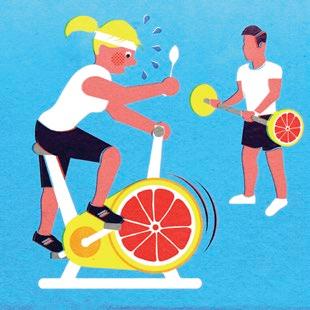
People seem to believe that there’s something magical about citrus fruit—that, in some way, its acidity helps to burn or digest fat.
This is just scientifically rubbish. It’s probably based on the fact that, years ago, acidic fruit juice was used by housewives for cleaning, including removing fat stains. While it might be good at breaking down fat on a saucepan, it doesn’t work like that once it’s in the body. Others believe that it increases metabolism and thus helps to burn fat. Again, there’s no evidence for this.
Of course, if you’re only going to have half a grapefruit for breakfast in place of a fry up, then you’re going to lose weight. It’s not actually anything to do with the citrus fruit; it’s just that you’re substituting high-calorie for low-calorie options.
The American Dietetic Association has reviewed the evidence and concluded that this “long-held myth is wishful thinking” and that grapefruit doesn’t help people lose weight or burn fat.
The only way to lose weight is to expend more energy than you consume. That means watching what you eat, counting calories if necessary and taking regular exercise. Grapefruit is full of vitamins and nutrients that the body needs, so is a good food to include in your diet— but it’s not going to make the pounds drop off magically.
The other thing to remember about grapefruit is that you shouldn’t eat it or drink it as a juice if you’re taking statins.

The ITV series everyone’s talking about!
The eight-part drama is about Victoria’s scandalous first years on the throne as a teenager, through to her marriage to her German first cousin.
Jenna Coleman stars as the young Queen, Rufus Sewell as her adored advisor and confidante Lord Melbourne, and Tom Hughes as Prince Albert.












“A terrific pace and fizzing exuberance… You’ll be swept away by it!” – Telegraph OUT ON 10.10.2016 169226 Victoria RRP: £24.99 Selling Price: £17.99



In the second part of our series focusing on care, Eimear O’Hagan discovers that, for a growing number of over-60s, the bottom of the garden is the perfect spot for a new abode…

RELAXING IN THEIR GARDEN, enjoying the last of the evening sunshine, David and Jen McAllister smile as their grandchildren excitedly traipse down the path towards their home.
After many years as “Skype grandparents”—living in South Africa with two of their seven children and four of their 11 grandchildren in the UK—the opportunity to live just yards away from them, in a “granny annexe” in the garden, is a dream come true for the couple.
“To go from seeing our precious grandchildren only once or twice a year, to now spending time with them almost every single day…it’s just wonderful,” says David.
“We feel incredibly lucky to have a living arrangement that not only gives us so much access to our family, but will allow us to continue to live independently as we age. And we’ve been able to help our children both financially and practically by virtue of our decision to live here.”
THE M C ALLISTERS are far from alone in recognising the benefits granny flats and annexes can offer elderly parents—and their adult children. Between 2013 and this year there was a 39 per cent rise in the number of these dwellings being built in England and Wales, according to Valuation Office Agency.
What’s more, after the government scrapped plans in April to tax buyers of a property with more than one unit —treating them as if they were buying a second home—it seems as if this boom is set to continue.
“We moved to the UK from South Africa in 2012,” explains 70-year-old David, an electronics engineer. “Our main motivation was to be closer to family as we grew older.”
The couple rented a flat in Surrey for a couple of years, but after being refused a mortgage on the grounds of their age, and seeing Jen’s 33-year-old daughter Bronwyn (from a previous relationship) and her husband Sven struggling to afford the deposit for a bigger family home, they decided to pool their resources.
“After a lot of discussion and research, we came to the conclusion it made sense for us to help with the deposit—using money we had from the sale of our home in South Africa—so Bronwyn and Sven could buy a three-bedroom home for their family, and build a little house for us in the garden,” says Jen, a retired teacher and carer.
“We’d already downsized from our large home in South Africa to our two-bed rented flat, so that side of things didn’t faze us. We knew as long as there were some simple rules in place, to protect our privacy and space as well as theirs, there’d be no problems living just metres from one another.”
Jen and David McAllister with two of their 11 grandchildren

JAMES LUND, managing director of building company Granny Annexe, says that demand for homes like the McAllister’s is on the rise.
“It’s a housing trend that’s gaining momentum,” he says. “Our sales are growing year on year by around 25 per cent, and it’s being fuelled by a number of factors—we have an ageing population, a generation of young adults who are struggling to move up the property ladder, and a housing shortage.”
Elderly parents are now selling their homes to help their children buy one, or giving their home to their child and then building an annexe for themselves in the grounds. It’s a
clever way of developing existing space for an affordable price.
“Some customers need practical care and support from their child, and living close to them makes that easier to receive,” continues James. “Plus, when you compare the average cost of an annexe build—around £70,000 for one of our designs—to years of nursing-home fees, it’s a financially savvier decision.”
Others are providing childcare to their grandchildren, and some families just want to be near to one another—without living together.
“Above all, there’s the desire of the older generation to retain their independence and stay in their ‘own
home’, albeit a smaller one,” says James. “And, for them, downsizing like this doesn’t mean they’re prepared to compromise on comfort and design. Typically, these are stylish, contemporary buildings— without a doily in sight!”
David and Jen’s home, which took just six weeks to build, is comprised of an open-plan kitchen/living area, a bedroom and an ensuite bathroom, with a small area of the garden fenced off for their personal use. Compact, but modern and flooded with natural light, they insist it’s perfect for their time of life.
“We’ve always lived in big, old houses, so it’s marvellous to have a home that’s so easy and quick to maintain, and feels fresh and new,” says Jen. “We brought some of our favourite pieces of furniture with us from South Africa, but mainly bought new things. This is a new chapter in our life and the annexe is symbolic of that.”
While David continues to work, Jen is now a full-time grandmother caring for her grandchildren five days a week.
“As well as Bronwyn’s children, I also look after my son Andrew’s two, who live nearby,” she says. “I love being able to help my own family, and it means they don’t need to pay expensive nursery fees.
“It works both ways of course, and should David or I need care in the future our children are happy to help
us, so hopefully we can stay in our home for the rest of our lives.”
THERE ARE PRACTICAL and emotional benefits of life in a granny flat—but is it a financially savvy move on the part of an adult child to add one to their property?
Rob Twining, from Purple Bricks estate agency, says it comes down to just how separately a family want to live from one another. “An annexe

attached to the existing house, essentially an extension, can add value to a property because it’s increasing the size of the home and future buyers could use it for different purposes, beyond just housing an elderly person,” he says.
“A completely separate building won’t necessarily add value because it’s a very niche market; not everyone needs a house in their garden. Granny flats are sensible options

A well-designed “granny annexe” can add value to a family’s property
for people who want to remain in their own home and be close to family, but build or buy one for here-and-now reasons—not for a guaranteed future investment.”
For many people, the idea of living on top of one another—and the accompanying loss of privacy and peace—might put them off the idea of a granny annexe. Some basic rules, say David and Jen McAllister, are the key to family harmony.
“We spend a lot of time together but we also value our time as a couple, and we want our children to have their own family life,” David points out.
“A sign hangs on our front door. On one side reads ‘Granny and Gramp’s Place—Where Memories Are Made’, which tells our children and grandchildren that the door is open, come on in. On the other side it says ‘Resting’, so they know we want some time alone.
“Boundaries are important and similarly we’d never just walk into Bronwyn’s house unannounced, as we respect their need for space too.”
of life in a granny flat are obvious— both for the older parent and their family—consultant psychologist
Dr Sylvia Dillon says it’s essential to be realistic and well-prepared before making such a move.
“It’s naïve to think that living in such close proximity to one another
“It’s the best of both worlds”
Breda Fitzsimons, 80, lives in Eaglesham, East Renfrewshire, in a one-bed apartment above the garage of her daughter Christine’s home.
“When Christine, 44, and her husband Brian, 47, told me they’d bought a new house with a purpose-built granny flat and invited me to move in, I didn’t hesitate to say, ‘Yes!’
Although I was happy living alone in Belfast, having been widowed 25 years ago, the chance to be so close to my twin granddaughters Charley and Erin, six, was one I couldn’t refuse.

It wasn’t easy leaving my home and my neighbours and friends— but I love my apartment and having my own space. I come and go as I please, drive my car around the local area, and my door is always open so my granddaughters can come and see me as often as they please.
Also I knew Christine found it hard to be hundreds of miles away from me as I was growing older, especially as I have bad arthritis. If I needed something, such as a home repair, she had to rely on friends to help me as she’s an only child. I knew she’d feel better having me nearer to her.
is an automatic solution to all problems,” she says. “If a parent needs care and support, they’ll still need that even if they’re in a granny flat. Their child will still have that responsibility and stress of juggling a caring role with their own career, family and personal commitments. So make provisions for some outside
I have dinner with my family around twice a week and we’ll go for lunch in the local village together, and for days out with the girls. Christine has a key to my apartment, in case I fall and she needs to get in, but she always knocks and is very respectful that this is my home, as I am of hers.
I’m determined never to have to go into a nursing home—it’s just not for me. This way I’m able to live independently and happily, in my own home but close to my family and with help when I need it. It really is the best of both worlds.”
care, if you can afford it or are entitled to it.
“Planning and communication are key to making this arrangement work. Think in advance how it will work in practice. For example, will there be ‘rules’ about going in and out of one another’s homes?
Who will be paying the bills for the
annexe? Will people have ‘roles’, such as carer, care-giver, babysitter? It’s crucial that everyone’s expectations, wants and concerns are aired from the outset.”
When a parent wants to retain their independence, and their child wants peace of mind about their well-being and safety, Sylvia agrees a granny flat can marry the two.
“The older person remains in control of their life, they have their own home and schedule, which is beneficial for mental well-being. And knowing their child is content, and not worried or stressed about them falling, becoming unwell or not eating properly, they don’t feel a burden on anyone. Plus, if the parent is able to help—with childcare, for example—that will really boost their self-esteem and confidence, because we all like to be needed.
“Research shows that older people live ‘better’ when they’re with their family, but while some families can happily live in one multi-generational house, many can’t. The feeling of separation and privacy a granny flat gives can be vital to maintaining domestic harmony.”

An older person living in an annexe can maintain control of their own routines
IT SEEMS CLEAR that with the right planning, and some basic ground rules, life at the bottom of the garden can be a very attractive housing option for downsizers wanting to remain both independent and close to family. The McAllisters certainly wouldn’t change a thing: “So far it’s all worked perfectly.”
If you search for “askew” in Google, the content will tip slightly to the right.
SOURCE: GOOGLE.CO.UK

Photographer James Eckersley selects the very best entries from our readers
YOU GAVE US A DIFFICULT TASK! We had hundreds of submissions to this year’s competition, depicting summer happiness in numerous guises. But after a lot of goodnatured debate, James Eckersley (left) managed to pick winners and runners-up in each category. Here are his choices, with comments from both photographer and judge. Many thanks for taking part!
Stephen Hammy
Nothing beats sharing a treat with your little friend after a visit to the ice-cream van on a British summer day! This was a visit to Rosemarkie beach on the Black Isle in Scotland earlier this year.
What our judge said:
This is such a lovely photo, where all the elements come together perfectly
to tell the story of summer happiness. The soft colours in the background offset the vibrant colours of the clothing, and the clever use of the railings to create leading lines and the slightly blurred beach, sea and horizon make this memorable shot a worthy winner.
However, this stood out for me because of the perfectly placed panda bear staring hauntingly at us—a clever twist on a classic child portrait.


Adults runner-up
Paul Ging, from Tyne and Wear
This photo is of our son Harry Ging—then aged four —on a water slide in Lanzarote. He was shrieking with delight as he went down, and I’d imagine every parent (or child) will add their own memory of excitement to this image and imagine his squeal echoing through the tube, ending with a splash!
What our judge said: To capture a perfect silhouette with a moving subject would have caused any photographer problems, but all the technical issues have been overcome here to give us a great shot filled with drama and excitement.



Adults runner-up
Debbie Hallsworth, from Norfolk
Nowadays, we rarely end up with quality photos preserved in albums. In search of these, we met up with our friend Debbie in a local park. This happy shot of our 12-yearold son William was the result!
What our judge said: A great photo! I love how the colours of the clothing offset the backlit hair, and how the swing is frozen in mid air by a fast shutter speed.

Under-18s winner Faris Qureshi, 12, from Barking
My mum liked my idea of taking a photo of everyone jumping at the moment they reached the water, so I took a few. This was my favourite, as I really liked how the sun shimmered on the water and how everyone was jumping at the same time. I had relatively basic equipment for taking this picture—an iPhone 6. I didn’t have a tripod or anything fancy, just the phone.

I think that’s why I like the photo so much; it was taken with no help!
What our judge said: I’m so impressed to see such a young photographer experimenting with shooting into the sun. Many seasoned old photographers would shy away from it, but the results can be fantastic. This picture really shows the technique at its best—the lovely warm tones of the sunset, and the silhouetted children enjoying the seaside, give this image a delightful sense of joy and serenity.
I also love the way my eye is drawn
around the picture. Starting with the bright sunset and horizon line, I follow the path of the reflection on the sea to search out the various silhouetted figures in the foreground. It amazes me that this kind of image can be captured on a simple phone camera, and it’s great that this new technology is inspiring a new generation of photographers to be passionate and creative image makers. It’s proof indeed that you don’t need expensive equipment to be a good photographer, as this is a beautifully composed and lit photograph. Well done!


Katy Read, 12, from Newcastleupon-Tyne
My dad and I visited Bempton Cliffs, near Scarborough, and the sunshine broke out at lunchtime after a cloudy morning. There were thousands of gannets on the cliffs, and this one looked as happy as I was at the change in the weather!
What our judge said: I was impressed with the diversity of responses to the theme “summer happiness”. The entrants displayed such a variety of things that made

Harvey Filsell, 16, from Eastbourne
This picture was taken at our local park. We’d actually gone to feed the ducks, but the pigeons were waiting patiently in the background for crumbs. My stepsister April put some bread on her hand to see if they would take it. A few swooped down and one even landed on her arm! She had a great time feeding them.
What our judge said: It’s not only the timing that works well here—I really like the brightness of the girl’s clothing and the shoes matching the feathers of the birds, contrasted with the lush green grass. But the best bit has to be the girl’s expression: pure joy!

them happy. This image shows a clear passion for wildlife—a lovely shot of a seabird nesting in its precarious environment.






Discover the quiet corners of the country that were once central to an empire
BY FIONA HICKSPositioned in the middle of an Area of Outstanding National Beauty, this large Roman villa and courtyard contains some of the best-preserved (and recognisable) mosaic floors in the country. There’s also a huge array of artefacts, exhibits and interactive displays, which are great for keeping even the littlest visitors engaged. When you’ve had your fill of Roman history, check out the additional gallery space that hosts collections from other museums, or meander up the meadow trail that shows off the surrounding countryside.
Arguably the best feature of all, however, is the Forum Cafe. Here you can enjoy home-made cakes, baguettes brimming with fillings and, should you so fancy, a pint of locally brewed cider—all while looking over the rolling landscape down to Sandown Bay.
■ Visit bradingromanvilla.org.uk for details



Twenty years after building the famous Hadrian’s Wall, the Romans decided to extend their territory even further, fashioning the magnificent Antonine Wall 99 miles north.
Stretching from Old Kilpatrick on the west coast to near Bo’ness in the east, this wooden construction,

37 miles in length, took 12 years to complete—overseen by the governor of Roman Britain at the time, Quintus Lollius Urbicus.
However, despite their ambitions, the Romans weren’t able to conquer the hardy Caledonians; the Antoine Wall suffered many attacks before being abandoned just eight years after completion.
Although not as well-preserved than its more southern sibling, the Antonine Wall still provides a fascinating, historical route for a ramble, bike ride or leisurely drive. The Rough Castle is particularly worth a visit, featuring the tallestsurviving portion of the Antonine Wall rampart.
■ Visit antoninewall.org for details
Discovered almost 160 years ago, Wroxeter Roman City was one of the UK’s first archaeological attractions.
Viroconium Cornoviorum, as the settlement was formerly known, was comparable in size to Pompeii with a bustling population of 15,000. Today, the remains hint at a vibrant and prosperous city. The enormous bathhouse, where townsfolk would have met to exercise and socialise, gives a glimpse into their everyday lives, while the 23-foot-tall basilica wall (the largest example of such in the country) shows off their architectural prowess. There’s also a recreation of a townhouse—all the more interesting because it was designed and built using entirely authentic Roman methods.
After wandering round the site, you can even treat yourself to a recreated Roman sword in the gift shop.
■ Visit english-heritage.org.uk for details

The Roman Bath Inn is a great place to see the remains of Roman York (or Eboracum, as it was then known)


There are plenty of places to see Roman baths in Britain—not least the city in Somerset—but there are few that offer a pint in the process. In 1930, it was discovered that this unassuming pub in the centre of York had been built on top of some remarkable Roman ruins.
“You have to make a decision when you walk through the front door of

the pub—turn left into the bar, or straight down the stairs into the museum,” says the pub’s manager Graham Harris.
With visible foot indentions in the tiles, the bath is impressively restored but, as Graham remarks, “Roman remains are found at an average depth of 13 feet under the modern city, so what we have is part of the paltry two per cent of Roman York excavated so far. There’s so much work for future archaeologists.”
Something to mull over as your enjoy your pint.
■ Visit visityork.co.uk for details

During the Roman occupation, the city of Corinium was second only to London in size, with a population of more than 10,000. Cirencester (as it’s since become) hasn’t quite maintained its dominance in the two millennia since, but it’s still a fine destination for a trip.
As well as the beautiful Cotswold buildings, excellent cafes and independent shops, there’s a grand example of a Roman amphitheatre. The large grassy mounds cover what would have once been tiers of seats made from planking and terraced drystone walls, plus standing room for an audience of 8,000.
“We can’t be sure what types of events were held here,” says English Heritage’s senior properties historian Sarah Ralph, “but during the Roman period bull-baiting, gladiatorial combat and wild-beast shows were all popular.”
■ Visit english-heritage.org.uk for details
Having stood strong throughout the entire Roman occupation until AD410—with some even believing it to be the site of the Claudian invasion in AD43—it’s somehow fitting that the fort at Richborough has endured the elements (and other assaults) until today. “A rare survival dominates the interior,” says historian Andrew Roberts. “That is, the base of one of the largest monumental arches in the empire. This is the most striking evidence of a thriving town, which was once the gateway to the province of Britannia.”
Whether listening to a guide or wandering around quietly, the views over the Kent countryside are staggering. You can even hop on a boat from the nearby town of Sandwich and approach the fort just as the Romans would have done.
■ Visit english-heritage.org.uk for details
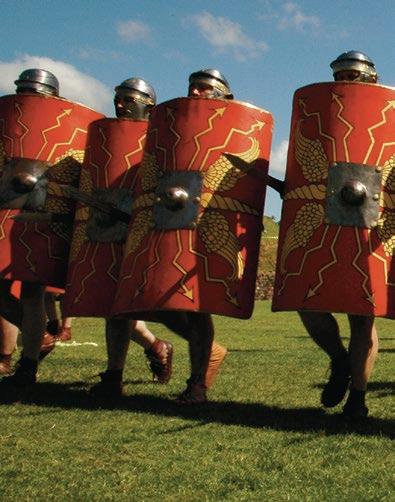


This pretty Welsh town held great significance from 75AD to 300AD, acting as the headquarters for Legio II Augusta. “Caerleon was one of only three permanent fortresses in Roman Britain,” says local Dai Price, and it’s unique in that many of the remains lie undisturbed.
For this reason, it’s easy—indeed tempting—to imagine yourself as a Roman centurion, wandering round his settlement, during a visit. Pass the sturdy fortress wall, pause at the magnificent amphitheatre and stroll back to the barrack buildings.

The latter is the finest-preserved example in Europe, displaying the centurion’s expansive quarters at the front and the legionaries’ smaller rooms at the back.
The National Roman Legion Museum houses further artefacts from the region, and puts on a variety of events (Roman-themed and others) throughout the year.
■ Visit caerleon.net for details
Do you have a favourite Roman attraction? Email readersletters@ readersdigest.co.uk and let us know!
At Rio this summer, Jo Pavey, 42 and a mother of two young children, became the first British track athlete to compete in five consecutive Olympic Games. She has also written her first book.
I’d promote fitness for the entire family. I’d make one day a year International Family Fitness Day and have activities around the world to encourage people to get out and have fun together. I have to fit my training in around my family, so often my son Jacob will get on his bike and my husband Gavin will put our daughter Emily on the back of his—and I’ll run alongside them. People often ask me how, as a busy mum, I’ve managed to keep fit and motivated, and the answer is that we do it together.
Phones would be put away in social situations. When I travelled with the team in my 20s, mobile phones weren’t everywhere like they are today. We talked a lot more to each other then, having a banter in the airport or hotel lobby, and it was good to connect to the person next to you. Nowadays everyone is looking down at their devices and it’s a bit sad. I’m not against social



media at all; I just wish we focused on the real world when we’re with real people.
Education for women would be available worldwide. In this country we take our right to an education for granted—I went to university and got a degree and have had many amazing opportunities in my life. But so many women are still fighting for the right to be educated. [Nobel Prize winner] Malala Yousafzai is one of my heroines and an inspiration to young women around the globe.
Doping in sport would be criminalised. In an ideal world it wouldn’t exist at all, but right now it needs to be a criminal offence. All athletes that cheat by using performance-enhancing drugs take something away from clean athletes; a possible moment on the podium that can never be given back. I’m still waiting to hear if I’ll be given a Bronze medal from the 2007 World Championships, since the athlete who came second was tested positive for prohibited substances. And since I came fourth in the 5,000 metres at the European Championships in 2006, the three runners ahead of me have all been banned.
I’d remind people that a messy house is acceptable. Being flexible with your routine and not stressing if you can’t fit everything in is really
important. I found a balance in my life between training, competing and good times with my family, and it has made me a happier person. I didn’t beat myself up if being tired after a bad night with a baby meant I was able to train a bit less the next day. I just did what I could. And I’ve always got a backpack in the car with my running shoes and something to put on, so that if an opportunity arises to fit in some exercise, I can take it. I’d also like to see far more flexible hours in the workplace; there have been improvements, but we could do a lot better.
I’d make sure we continue doing everything we can for the wellbeing of our planet. The hole in the ozone layer has shrunk since the ban on CFCs in 1987, and we should take great joy in the knowledge that we really can make a difference for future generations.
Eating chocolate would be as healthy as eating an apple. Of course I have to watch my diet, eating the right things at the right time, but I treat myself to a bit of chocolate every day. I love it and wish I could have as much of it as I like and that it was just as nutritious as fruit and vegetables. Wouldn’t that be brilliant?
As told to Caroline Hutton
Jo Pavey’s book This Mum Runs is out now, published by Yellow Jersey.


there are more extraordinarily wealthy individuals than ever before—and their similarities are surprising
By Edw IN a La N g LE yTHE YEAR IS 1956 and Cole Porter’s musical High Society has just been released. On silver screens across the world, the character of Mike Connor—observing New York Society’s super rich—wistfully asks, “Who wants to be a millionaire?”

Take a look at today’s richest and some interesting parallels do come to light—and they’re not what you’d expect
Fast forward 40 years and a million still had weight. The National Lottery began its millionaire-making promises in 1994, and in 1998 Chris Tarrant lit up our TVs with a game show that asked Mike Connor’s question. Offering a fast-track route to riches, Who Wants to Be a Millionaire?
fascinated the UK, with peak viewing ratings of one in three.
As recently as the 1990s, then, millionaire status still meant unimaginable wealth—but that’s all changed. Today, it’s all about the billionaire. In the past two decades there’s been more than a 1,000 per cent increase in those with a billion to their name. But why? And, more importantly, how?
“There are two economic factors that produce more billionaires,” says Sam Wilkin, author of Wealth Secrets: How the Rich Got Rich. “First, inflation. A billion dollars today is, in value, equivalent to ‘only’ about $550 million 25 years ago.
“Second, global economic growth. There’s more money in the world today, so there are more billionaires. However, total inflation over the past 25 years was about 82 per cent, and yet the number of billionaires increased from 99 in 1990 to 1,826
in 2015, which is a 1,744 per cent increase. So it seems that something else happened.”
Pinpointing that elusive “something else” is no easy task (if it were, we’d all be rolling in it). And yet, take a look at today’s richest and some interesting parallels do come to light—and they aren’t necessary what you’d imagine. So all those wanting to join the rich list, take note: here are some pointers you might want to consider.
If you’ve ever attributed your lack of billionaire status to the fact you never made it to the hallowed halls of Oxbridge, you needn’t worry. While it’s true that Facebook founder Mark Zuckerberg’s social-network site originated from Harvard, many billionaires never made it to further education—and some didn’t even complete A Levels.
Virgin media founder Sir Richard Branson, for instance, was dyslexic and left school at 15. He launched Virgin Mail Order at 20, a business through which he sold discounted records by post. According to this year’s Sunday Times Rich List, he’s now worth a cool £4.5bn.
Still not convinced? Take John Cauldwell. He left school before his A Levels to work as an apprentice in a tyre factory and later found employment as a car salesman. In 1987, he turned his attention to mobile phones and set up the
Many billionaires didn’t make it to further education, and some didn’t even complete A Levels

Roman Abramovich has £6.4bn to his name
wholesaler Midland Mobile Phones with his brother Brian. This later became Phones4U— and he’s now worth £1.5bn.
Other billionaires who vetoed university include Lord Alan Sugar (£1.2bn), Laurence Graff (£3.2bn) and Roman Abramovich (£6.4bn).

Bill Gates remains the world’s richest man; (left) apps Uber and Snapchat have made billions

cleaner that negated the need for a bag entirely. Sadly though, the UK wasn’t interested. Indeed, not one manufacturer would touch it because of fears it would diminish the dustbag market. So he took it to Japan.
It was ten years before Dyson broke into the UK market. But when he did, his Dyson Dual Cyclone became the fastest-selling vacuum cleaner in the country. This invention then duly led to others: the Dyson Airblade hand dryer, for instance, and more recently, the Dyson Supersonic hair dryer. Dyson himself is today worth around £5bn—all from that very simple idea of making something already available better.
Similarly, look at Sir Anwar Pervez. In 1963, when he was 27 years old, he opened his first convenience store, Kashmir, in London’s Earls Court. In 1967, he opened a second, which he decided to name Bestway.

Not everyone has to be like Ellis Short, the founder of private-equity fund Kildare Partners, which invests in distressed property assets across Europe and has accrued approximately £1.2bn. Some people can just get really fed up with their Hoover and have an idea for a new one—like Sir James Dyson.
Dyson was irritated by how often his Hoover dust bag got blocked and decided to design a new vacuum
By the early Seventies, he had amassed ten stores, but he had a problem—he was growing increasingly disillusioned with wholesalers, who were operating on very high profit margins. So he decided to become a wholesaler himself. He bought his stock at cheaper prices, passed on savings to his customers and still made a profit. Bestway Cash and Carry’s first warehouse opened in Acton in 1976, and today Bestway group is the UK’s
largest independent food wholesale business. Sir Anwar and his family are reportedly worth £2.8bn—and that all stems from a small convenience shop in the Sixties.
If you’re good with simple ideas, but conversely have no idea where to start, turn your attention to tech. As Sam Wilkin points out, “One quarter of the 20 largest fortunes in the world are from a single economic sector—the technology sector.” This, of course, includes the world’s richest man, Bill Gates.
“The economics of these businesses cause them to become monopolies— where one firm dominates the entire sector—meaning they produce a lot of great fortunes,” continues Sam. “Microsoft had close to a 90 per cent share of personal computer operating systems; Amazon has close to a 60 per cent share of electronic books; Google has roughly a 60 per cent share of internet search; Facebook has a 80 to 90 per cent share of social-media logins in many European countries.”
We don’t need telling twice, and we only need read about Evan Spiegel to be further convinced. He left Stanford University to found the hugely popular instant-messaging mobile app Snapchat in 2011—and at just 26 years old, he’s now worth a reported £2bn.
Once you’ve got your simple tech idea, you must then get yourself down
Evan Spiegel left university to found the instant-messaging mobile app Snapchat and is now worth £2bn
to the US’s Silicon Valley. From 2014–15 it was home to 23 new billionaires, so you’ll be in good company. Travis Kalanick and Garrett Camp, for example, founded a taxi app there. They named it Uber and are now worth around £4.7bn—each.
However, if you’re not an ideas person, don’t panic. Just make sure you know a good idea when you see one. David Ross was asked by his school friend Charles Dunstone to join the mobile-phone business Dunstone had set up from his London flat using a mere £6,000 of savings. The business was called Carphone Warehouse and Sir Charles Dunstone is now worth an estimated £1.3bn. And while Ross’s fortune comes up just shy of the coveted sum—at circa £923m—it’s certainly not a fortune to be sniffed at.
Certain regions are more likely to produce certain types of billionaire, so it’s important you’re in the right place to make the most of your idea.

Dame Mary Perkins and her husband set up Specsavers, now worth £1.5bn
The Billionaires Report from UBS/ PwC, entitled Master Architects of Great Wealth and Lasting Legacies (published in May last year), uncovered that financial and technology mega fortunes are most often made in the US, whereas in Asia it was the consumer and realestate industries that produced the most billionaires.
Similarly, in Europe, the consumer industry—such as the fashion and beverage sectors—tends to be where billionaire wealth lies. Ninety-yearold Londoner Bernard Lewis, for instance, founded a clothes shop
called Lewis Separates with his three brothers in 1948. It later became River Island, and he and his family are now worth £1.5bn.
As UBS/PwC’s follow-up joint report The Changing Faces of Billionaires (published last December) revealed, female billionaires are growing at a faster rate than male. Coining the trend “the Athena Factor”, the report found that the number of female billionaires increased by a factor of 6.6 from 1995–2014, compared with only 5.2 for male. Most reside in the US and Europe, but Asia was identified as the region with the fastest-growing number of self-made female billionaires.
While figures this year have seen a slight dip—Forbes reported in March that the number of female billionaires had fallen from 197 to 190—27 women have become billionaires for the first time, and three have regained billionaire status.
As an example here in the UK, consider Dame Mary Perkins. She and her husband Doug thought up the idea for an opticians in 1984, using a table-tennis table in their spare room as a desk. Thanks to the deregulation of the opticians market at the time, they went on to become the first in their trade to advertise and run showrooms. Their business was also unique in the way they made
each outlet a dual business venture between them and the opticians who ran it. Today, the company is worth around £1.5bn. It’s called Specsavers.
It may surprise you to discover that wealth therapists exist, but they do— and it’s easy to see why.
Jamie Traeger-Muney, founder and CEO of the Wealth Legacy Group, says, “In today’s Facebook and Twitter culture, where we seem to know what’s happening with people at all times, openly discussing money and wealth is still a taboo subject. Because of this, many of the ultra-wealthy feel isolated. They almost never have a safe forum in which to discuss the unique aspects of some of the most basic developmental stages of life— such as dating and marriage, where the partners have very different financial backgrounds.
“The world’s richest people also
experience living under a microscope. Because of their wealth, many assumptions are made that often have very little to do with the people themselves, but are more of a stereotyped perception.”
As you can see, it’s not easy being unbelievably rich. Make sure you’re up to it.
It’s what we all want—to make our billions in the shortest amount of time. Sadly, though, we must manage our expectations. As Forbes’ The World’s Billionaires list indicates, only two in the top 100 are under 40 —Facebook’s Mark Zuckerberg, 32 (worth £39.5bn and number six in the ratings) and Walmart heir Lukas Walton, 29 (£8.3bn at number 99)— and most of the top 100 started in their twenties or earlier.
So if you’ve got a great idea, get going—and fast. Good luck!

a M a VERICK thought
with the us presidential election looming, some small-town folk have been mulling over a different approach to managing modern society—creating traffic-stopping signs in the process.
SouRCE: SadaNduSELESS.CoM

Saltwater crocodiles are the largest living reptiles in the world, with adult males being typically 13-18 feet long
An Australian study of saltwater crocodiles has revealed some surprising facts about these fearsome creaturesBy Franz l idz

The saltwater crocodile is a great, stealthy, archaic beast that you wouldn’t expect to pacify with a little friendly tickle on the tail. But here is Daisy, a seven-foot Australian saltie on a grassy shore of the Wenlock river, as placid as a Pekingese. robert irwin, the son of the late naturalist steve irvin, is stroking the lower third of her thrashing anatomy. Fortunately, a blindfold, gaffer tape and a rope muzzle ensure the amity of this relationship.
Daisy’s sawtooth tail whips the prone boy to the left. “The jaw pressure of the crocodile is incredible—more than 3,000 pounds per square inch!” Robert tells me. Daisy’s tail whips him to the right. “I admire the crocodile’s ability to kill with just its teeth. It’s quite amazing!”
Robert’s older sister Bindi looks on solicitously. Her smile conveys a disarming buoyancy. “Here’s an animal that many people think is just a stupid, evil, ugly monster that kills people. That’s so not true!”
Bindi and Robert are following in the footsteps of their father Steve, the boisterous naturalist of Crocodile Hunter fame. Irwin’s shtick—upclose interactions with dangerous animals and squeals of wonderment (“Crikey!”) at their deadliness—made
him an TV phenomenon. Irwin’s encounters ended in 2006, when a stingray’s barb pierced his heart while he was filming on the Great Barrier Reef. He was 44.
It’s late morning on the Wenlock and the odour of rotten meat hangs in the air. A pig carcass was used to bait the trap that caught Daisy. It was one of 17 traps set along this 30-mile stretch of the river. Bright sun filters down onto the bank, where Robert and Bindi, their mother Terri, and a team of animal wranglers from the family-owned Australia Zoo are taking part in an amazing zoological study.
For more than a decade researchers have monitored the behaviour and physiology of saltwater crocs in Queensland, mainly at the 333,000acre Steve Irwin Wildlife Reserve,
“Here’s an animal tHat many people tHink is just a stupid, ugly monster. tHat’s so not true!” says Bindi

created by the Australian government on the Cape York Peninsula. Their discoveries about the salties’ habits, homing abilities and private lives have prompted a rethink of how they live and how we can co-exist with them. Far from being sedentary, solitary animals with one dominant male defending a set territory, as once thought, salties turn out to be far-ranging creatures with complex social hierarchies.
The research project is led by Craig Franklin, a University of Queensland zoologist, who has trapped, tagged and released scores of salties. Data is gathered through acoustic telemetry and by satellite transmitters that
beam information to a Brisbane lab, which tracks the beasts. The project is bankrolled by the Irwins’ zoo, federal grants and private donors.
Today, a videographer and photographer are on hand to document the work on the Wenlock River for the zoo’s website. While Robert hugs Daisy’s tail, Franklin cuts an incision behind the croc’s left forelimb, inserts a transmitter and wires the wound shut. “The skin is so thick that sewing it together is like trying to stitch up cowboy boots,” says Bindi, a mainstay of Franklin’s annual field trips since Day 1. Franklin takes blood and tissue samples, and as he measures Daisy, Bindi jots down the figures.
When the blindfolded Daisy lets out a low growl, Bindi flashes a smile. “Crocodiles are very vocal, quite intelligent and so capable of love,” she says. “When an adult female rests her head on her mate’s stomach, there’s no way to describe it but love.”
There’s something inscrutable and prehistoric about the crocodile. Some Aboriginal people have traditionally hunted crocodiles for their meat, but their population remained stable until the Second World War ended and high-powered rifles became widely available. Commercial hunters and trigger-happy sportsmen slaughtered them indiscriminately. Since given protection in Australia in the early 1970s, their numbers have rebounded, then boomed to about 100,000.
Of the 23 crocodilian species, two inhabit the rivers, billabongs and mangrove swamps of the Australian tropics: the freshwater, or Johnstone’s, crocodile (relatively harmless), and the bigger and far more aggressive estuarine, or saltwater, croc, which can grow to over 20 feet in length and weigh more than a ton. The range of the two overlaps somewhat.
Salties are efficient hunters with
nearly 70 interlocking teeth. If one breaks off, there’s another underneath to replace it. Numerous muscles close the brute’s jaws but only a few open them. Over the last 70 million years not much has changed in the saltie’s evolutionary design. This archosaurian behemoth can see well by day and by night, and has three pairs of eyelids, one of which protects the croc’s vision underwater. A flap at the back of their mouth prevents water from filling the lungs.
Salties stalk their quarry with deadly patience—over days if necessary— learning its habits and feeding times. The croc skulks below the surface near the water’s edge, poised to ambush any of a number of animals, including cattle, wild boar, kangaroos, even other crocodiles as they come to drink. Lunging and chomping, the saltie drags larger prey into deep water where it’s drowned. Executing a death roll, spun by a corkscrew snap of the tail, the crocodile then twists off hunks of meat.
Not for nothing are salties called man-eaters. On average salties attack and eat one person a year in Australia. In 2014, they took three people, with
not for notHing are salties called man-eaters. on average, tHey kill and eat one person a year in australia
Saltwater crocodiles are believed to have the greatest bite force of any living creature

the death of a fourth person most likely the result of a saltie attack.
What’s perhaps surprising is that Steve Irwin, though controversial for his flamboyant hands-on approach to wildlife, quietly teamed with serious scientists and conservationists to make a real contribution to the systematic natural history of this enigmatic critter.
Irwin wrestled his first crocodile at the age of nine. His father, a plumber who had opened a small reptile park on the Queensland coast, taught him how to catch freshwater crocs, and then how to lug smaller saltwater crocodiles out of the water. Together, they relocated crocs threatened by human settlements to the park.
Irwin took over the business in
1991. The following year he married Terri Raines, a tourist and wildlife rehabilitator from Eugene, Oregon. Footage from their crocodile-trapping honeymoon became the first episode of The Crocodile Hunter.
As the show grew, Steve and Terri expanded Australia Zoo, with more than 1,200 animals on 100 acres of bushland. Passionate preservationists, Steve and Terri Irwin set up a foundation to protect habitats and wildlife, create rescue programmes and finance scientific research into endangered species. They bought large tracts of land in Australia, hoping to turn them into protected areas, and campaigned against the illegal trade of ivory and exotic furs, and the culling of kangaroos by the Australian government.
In 2003, Franklin met Irwin by chance in Queensland’s Rinyirru National Park. “I was leery of the whole celebrity thing,” Franklin recalls. He was pleasantly surprised. “Despite no formal training, Steve had all the qualities of a great scientist. His intellect was phenomenal, he was driven by curiosity and he had an endless list of questions. His powers of observation proved invaluable in our crocodile-tagging project.”
In 2004, Franklin and Irwin joined forces with the Queensland Parks and
check out potential nests weeks before laying eggs; that dominant males maximize reproductive success, while subordinates roam hundreds of miles of waterway, possibly in search of unguarded females.
Salties, Bindi points out, invest considerable parental care in the rearing of their young. The female may gently roll eggs in her mouth to assist hatching. When her hatchlings start chirping, she digs them out of the nest, then carries her little darlings to the water’s
salties invest consideraBle parental care in rearing tHeir young, staying witH tHem for several montHs
Wildlife Service to launch the first published satellite-tracking study. Dozens of adult salties were outfitted with satellite transmitters that record information for a year or more. “The technology lets us access data without disturbing the crocs,” Franklin says. “They act quite differently without human interference.”
Over the years, researchers have determined that saltwater crocs can hold their breath for nearly seven hours and can dive more than 23 feet; that they’re capable of walking miles between waterholes; that females
edge and remains at their side for several months.
What she loves most about the research study is that you can track a crocodile for ten years. Some are caught and recaught and recaught again. Says Bindi, “It’s kind of like seeing an old friend. You become attached to an individual and watch it grow and observe all its changes.”
herpetOlO gists had wondered for a long time how salties—notoriously poor long-distance swimmers—have inhabited so many South Pacific islands separated by expanses of
ocean. But data gathered by Franklin and other researchers revealed that during long voyages, the crocodiles ride surface currents, rather like surfers catching waves.
Salties’ uncanny ability to find their way home after being relocated, which Franklin and co-workers have documented in several studies, remains something of a mystery. Perhaps, he speculates, “they swim around when released and realign themselves by celestial navigation or geomagnetic cues”.
Such findings proved significant because moving salties has been used in Queensland to manage potential safety risks posed by the animals. “Our experiment showed that translocation was ineffective and extremely dangerous,” Franklin says. People got a false sense that the waters were crocodile-free. The government abandoned its programme in 2011.
Though hunting saltwater crocs
is banned in Queensland, the state has established “Crocodile Management Zones”. Private contractors in Queensland are permitted to capture, snare or harpoon rogue salties in those areas and place them in a zoo or crocodile farm or, in some cases, humanely euthanise them.
Bindi considers the plan immoral. “Crocodiles are of vital importance,” she says. “They’re apex predators that regulate populations of other organisms. Without them, the entire ecosystem could collapse.”
She concedes that crocodiles do sometimes attack and kill people. But when humans are attacked, she reasons, it’s almost always because they acted irresponsibly: fishing with bait tied to their belt, swimming after dark, ignoring warning signs or stealing them for souvenirs.
“It’s up to us to learn to live with crocs,” Bindi says. “After all, they were here first.”
an extract from a recent submission to the Kilmer Bad Poetry Contest: shall i compare thee to a summer’s day? no. i like summer’s days.
A better metaphor would be a bear—a great big, majestic bear that has been hibernating for months.
no, you are like a roman god. Because you use “per se” a lot. incidentally, that phrase doesn’t mean…whatever you think it means. look it up.
Lake Annecy is the third largest lake in France; (right) the Thiou river runs through the old town
BY CATHY ADAMS


Cathy has danced in Rio, been microlighting in South Africa and hiked the mountains of Oman
AS I LAY ON MY BED and gazed out of the shuttered window to my balcony, it was hard to imagine a more perfect view to wake up to.
I was in Talloires, a beautiful little town on the edge of the turquoise waters of Lake Annecy. It’s a relaxing place to visit in June, and my parents and I were treated to a virtually empty Hotel du Lac and a peaceful, pristine pool.
Wherever you look here, majestic green mountains surround you: the lush green colour of them suggests that this is also a place that experiences its fair share of rain. We were right—during our stay we witnessed three impressive thunderstorms and the kind of lightning displays that make you gasp out loud. Thankfully the weather was relatively kind for the rest of the trip!
The best thing to do on Lake Annecy is to explore it by boat, or join the seemingly constant throng of paragliders from Les Passagers du Vent at Talloires-Montmin floating down from the surrounding mountains.
On our last day we ventured out to Annecy old town with its history, tiny shops and streets lined with cafes and
restaurants. It was market day when we visited and we were treated to hundreds of stalls with cheese, meats and fruits. It’s easy to get lost in the town’s spell—as well as the maze of alleyways that link the walkways along the Thiou river.
The food and drink around Annecy was fantastic—from huge tankards of strawberry beer to the restaurant at the Villa des Fleurs, which was right opposite our hotel.
It was a wonderful holiday that ticked all the boxes: adventure, history, relaxation and beauty. We’ll definitely be back!
■ MOUNTAINS AND LAKES
Talloires is an hour’s drive from Geneva. Flights to Geneva start from £23.99pp with easyJet (easyjet.com).


FORGET ANY APPREHENSION you have about it being a dilapidated English resort: the Kent seaside town has been given a new lease of life thanks to the opening of the Turner Contemporary Gallery five years ago —supported by artist Tracey Emin, who grew up in Margate.
By October, the tourists have mostly disappeared. This month is the By the Sea music festival, with some big-name artists headlining. If you’re not a music fan, Margate still trades on its old-school seaside appeal, boasting a reinvigorated Dreamland amusement park.
■ OH, I DO LIKE TO BE BESIDE... For more information on Margate, go to visitthanet.co.uk
Tell us about your favourite holiday (send a photo too) and if we include it on this page we’ll pay you £50. Go to readersdigest.co.uk/contact-us WE WANT TO HEAR FROM YOU!

■ CELEBRATE: CAESARS’ 50TH
BIRTHDAY The iconic Caesars Palace celebrated its 50th birthday this summer. Drop in and walk around the hotel’s gargantuan casino, or eat at its fun Bacchanal Buffet. (+1 866 227 5938, caesars.com).
■ STAY: THE BELLAGIO
Caesars’ more prim neighbour is The Bellagio, most famous for its lavish fountains outside, which put on a show every 30 minutes during the afternoon. Rooms are large with great views of the famous Strip (+1 888 987 6667, thebellagio.com).
■ WATCH: LOVE This year is the 10th anniversary of LOVE, the Cirque du Soleil show inspired by The Beatles. Watch the Fab Four’s seminal hits brought to life through world-class acrobatics (cirquedusoleil.com/ beatles-love).
HOLIDAYS
LONG: New York
Explore the Metropolitan Opera (including a backstage tour) with three performances, and visit New York’s other world-class museums on this cultural tour. Kirker offers a fivenight trip to New York from £2,649pp (020 7593 1899, kirkerholidays.com).
SHORT: Berlin

Book now for the New Year tour of Berlin. It includes a performance of Bizet’s Carmen at the grand opera theatre, plus a gala concert with Tchaikovsky’s music. Travel for the Arts offers a four-night trip from £1,850pp (travelforthearts.com).

GoEuro, Free, iOs, Android. This racks up the savings by comparing prices of buses, trains and flights in Europe— which you can then book via the app. Cheap and easy!






















 Julie Peasgood 2016 - Writer, presenter, & travel expert
Julie Peasgood 2016 - Writer, presenter, & travel expert










Whether you’re worried about passing maintenance bills to family, nding travel more di cult or perhaps you actually want to travel more - this FREE guide’s an excellent place to start. With 40 pages of independent expert advice it’s easy to make your timeshare work for you.
Last year we helped 1000s of people ensure that they were still getting the most out of their investment. For whilst the sun may still shine, and the location’s still great, your needs and that of your loved ones will inevitably change over time. Our Timeshare Health Check helps you assess if your property is still right for you – and if it isn’t, we o er straight talking and totally independent advice on what to do next. To nd out more and to claim your FREE guide call TODAY!


“ It’s good to know that there’s a company out there that helps people with no-obligation timeshare advice ” For







DEMENTIA BRINGS WITH IT SO MANY CHALLENGES, both for the sufferer and for their loved ones. Not least among these challenges is who—if anyone—can make decisions for the sufferer as their condition progresses.
As a nation, our average life expectancy is rising. Yet inextricably linked to the average person living longer is the increase in the number of dementia sufferers. Dementia is a term used

to describe a number of different illnesses, the most commonly recognised being Alzheimer’s.
Every day there are families left wondering what they can do to help their friend or family member, who may be unable to make decisions for themselves. Paying bills, controlling bank accounts, selling property, making decisions about where to live, what to wear and which medical treatments are acceptable are just a few of the decisions that might need to be made.
Without planning for the possibility of becoming a dementia sufferer, loved ones may be left in the unenviable position of having to apply to the Court of Protection to be appointed as a Deputy. Applying for Deputyship is a long, complex, intrusive and costly
procedure. Anyone who’s been unlucky enough to experience the process would certainly agree it’s something best avoided where possible. And avoiding this court process is entirely possible—by planning ahead.
There are two types of Lasting Power of Attorney: one that allows a person to nominate the people they trust to manage their financial affairs in the event of their mental incapacity, and another that allows the nomination of trusted people to make decisions about health and welfare. In the case of the latter, these trusted people could even be given authority to make decisions about lifesustaining treatment.
A Lasting Power of Attorney needn’t cost the earth and can be arranged in the comfort and privacy of your own home.
Start by requesting your free information pack from Reader’s Digest Legal, by calling 0800 031 9516 and quoting reference RDL16.
Reader’s Digest Legal is a service provided by the Collective Legal Solutions Group.
Why only making the smallest repayments on your credit card could end up costing you a lot
B Y A N d Y W EBB

Andy Webb is a money expert at the Money Advice Service. Visit money adviceservice. org.uk for details

When you spend on a credit card, you buy now, pay later. The safest—and most cost-effective—way to manage credit cards is to pay the full balance off every month to avoid adding interest charges on top of what you owe.
But if you can’t afford that, you can choose to pay off a smaller amount each month until the debt is cleared, with the “minimum repayment” being the lowest amount you need to pay to avoid extra charges and fees. However, if you do this you’ll be paying high rates of interest on the debt.
Minimum repayments are usually a percentage of your debt. Part of the problem is every time you make a payment and the amount you owe decreases, the minimum repayment drops too.
This can mean it takes years to clear a debt—and while you owe money, you keep getting charged interest, so the original amount you borrowed will end up costing you even more.
If you borrowed £1,000 on a card charging 18% interest, a payment of £50 a month would clear the debt in two years and cost you £179. But just making the minimum repayment of 1% (or £5, whichever is greater) could take 18 years and three months, and cost you £1,204 in interest—more than double what you spent!

For some, making minimum repayments is just habit rather than the only choice. One way to reduce the overall cost of the money you borrow on credit cards is to pay back as much as you can afford instead of just paying the minimum amount. Setting up a direct debit for this amount—rather than a percentage— means you’ll clear your debt more quickly and pay less interest.
If you’ve got a decent credit rating, you could apply for a 0% balance transfer credit card where, for a fee, you can move your debt to a different card—which doesn’t charge interest for a limited time.
Of course, even just making the minimum repayment is better than missing a payment. You’ll probably get charged a late- or missed-payment fee. Any special offer you have, such as a 0% rate or your credit limit, could also be reduced.
If this is a one-off, try contacting the credit-card company to ask if it will let you off. Setting up a direct debit can often help avoid this happening. The biggest risk, though, is the damage a missed payment could do to your credit rating. Your credit score can be the difference between getting a mortgage, mobile phone or bank account—or not.
The big news for people who have a prepayment meter is, from April next year, there will be a cap on how much companies can charge you. OFGEM estimates it’ll save these households around £75 a year.
This is in response to a two-year investigation into how energy companies sell gas and electricity. Other proposals are to be consulted on, but it’s expected from 2017 we’ll see more tariffs on offer to encourage suppliers to lower prices and offer exclusive deals to customers and comparison sites. This also means comparison sites won’t have to show every deal available.
It’s also likely you’ll be contacted more often, possibly by letter, by other energy companies if you’re on one of the more expensive “Standard Variable Tariffs” to prompt you to switch. This is likely to begin in 2018, though testing will begin earlier.
Don’t wait for the new rules OFGEM estimates anyone who isn’t on a fixed-energy rate could save

£300 by moving to one. That’s a big chunk of cash you could put towards savings, a holiday or even Christmas —so don’t wait.
It’s really easy to do. All the details you need to find the best deal is on your energy bills from the last 12 months. Enter information such as how much energy you used and the name of the tariff you’re currently on into a comparison site and you’ll be presented with an estimate of how much you could save.
Fixing will lock in the price per unit of gas and electricity for a year or more, and often represents the best value.
Ten million UK adults struggle to make their wages last most or every month. That’s the key finding of the Money Advice Service’s research into how we spend our pay cheques.
For two-thirds of those who can’t make it to the end of the month, the cost of living is just too much. The majority find there is little left after bills, while some struggle to even cover essentials in the first place. It means getting through to the next pay day is a challenge.
Others battle with their bank balance thanks to spending more than they should, with postpayday splurges and not being aware of how much they’ve spent depleting money towards the end of the month.
How strugglers cope as the month goes on Turning to credit and other forms of borrowing are the most common ways strugglers try to get by, with credit and various store cards used by a quarter. Overdrafts, friends and family and savings are also sources of funding to get through to next payday.
If you’re resorting to borrowing to get by, especially if it’s to cover essential bills, it’s a sign you need to take action fast. If the debts haven’t already built up, they soon will—and it’s better to get ahead of them than let the money you owe take over.
Don’t pay for help with your debts. You can get free, independent advice all over the country—the Money Advice Service has a handy tool so you can search by your postcode for someone near you.

















• Driver injuries
• Passenger injuries
• Hit-and-run injuries
• Motorcyclist injuries
• Cyclist injuries

• Back injuries
• Lifting injuries
• Trips and falls
• Industrial injuries
• Respiratory diseases

• Falls in public places
• Falls in shops and offices
• Package-holiday injuries
• Pothole accidents
• Faulty-product injuries









PETER'S STORY

"I was involved in a serious motor-vehicle accident and sustained whiplash and back pain. I spoke to Accident Advice Helpline, who were very helpful and took the stress out of the situation"
Received £4,500







Rachel Walker is a food writer for numerous national publications. Visit rachel-walker.co.uk for more details
PORK FILLETS VARY IN SIZE, but they’re usually around 400g. Generally I find it’s a little too big for two, but a little too small for four. It explains why this recipe is, unusually, for three people. Unless you’re part of a happy family of three (in which case the recipe amounts will be a welcome relief), I suggest that you either double the amounts and get some friends over, or freeze any leftovers.
Serves 3
• 400g pork fillet
• 40g plain flour
• Salt and pepper
• 1 egg, whisked
• 80g breadcrumbs
• 225g rice
• 40g butter
• 200g green beans
• 3 lemon slices
For the quick tartare
• 3tbsps mayonnaise
• 1tbsp crème fraîche/ plain yogurt
• 1tbsp chopped capers
• 1tbsp chopped gherkin
• 1tsp chopped parsley
• Squeeze of lemon
1. Cut the pork fillet into three equal-sized oblong pieces. Next, create a “butterfly slice” by cutting each piece lengthways down the middle, but don’t slice it right through— just halfway, so it can be opened out like a book. Put the opened-out pork fillet between two pieces of cling film and bash with a rolling pin until flat. This ensures that the pork

cooks quickly and evenly, as well as tenderising it—and if you’re cooking with children, they’ll particularly enjoy this part!
2. Line up three shallow dishes. Tip the plain flour into one and season generously with salt and pepper. Tip the whisked egg into the second bowl and the breadcrumbs into the third.
3. Coat each fillet in the seasoned flour and then dust off the excess. Next, dunk it in the egg and then coat in the breadcrumbs.
4. Put on the rice to cook, as per pack instructions, and make the tartare sauce by mixing together all the ingredients in a small dish.
5. To cook the schnitzels, put roughly two-thirds of the butter in a large flatbottomed (frying) pan. When it starts to foam, quickly put the schnitzels in the pan and fry for 3 minutes without moving them.
6. Add the remaining butter to the pan. Flip the schnitzels and cook for another 2 minutes.
7. Put the beans into rapidly boiling water for 2 minutes, cooking them quickly so they still have a bite to them. Drain and divide between three plates, along with the rice.
8. Slice the schnitzels into fingers and serve them topped with a tablespoon of tartare sauce and a slice of lemon.
“AT T h E START OF T h E 20T h
c ENT u RY, top Riesling was often more expensive than Champagne,” explains James Dawson, founder of Humble Grape.
The grape is often used as an example to show how fickle the wine market can be. Poor-quality exports around the Seventies and Eighties blighted its reputation, and it never recovered from its fall from grace.
But experts are now predicting a revival. Bottles are cropping up on more wine lists, and this year’s UK Wine Market Report confirmed that Riesling is one of the main white-wine varietals “widening their appeal”.
Before the noble grape recovers its reputation, sneak in on the action early. If you find a bottle you particularly like, then it might be

worth investing in a case (or two)!
“The variety has amazing ageing potential,” says expert Matt Skinner, who predicts that some of the best bottles will outlive us all.
It’s rarely oaked and is a delicately aromatic wine—typically with floral, green apple and citrus notes. It’s often commended for pairing well with tricky Asian flavours, and it’s generally one of the most food-friendly wines. It works well with most dishes— particularly a Schnitzel, which hails from Riesling’s homeland.
■ Peter & Ulrich Dry Riesling 2014/2015 (12%), £9.99, Majestic bone-dry with a cleansing acidity.
■ Ruppertsberger Hoheburg Riesling Kabinett 2015 (11.%), £6.50, The Wine Society pleasantly sweet with honey and apricot notes.
■ Weingut Von Winning Riesling, 2013, Pfalz, Germany (12%), £15, Humble Grape. Extremely good value, and will change your view of riesling.


This is a controversial pudding, because most people are still traumatised by hard, thick-skinned school semolina. I’m a big fan though—and think it’s definitely worth giving this classic dessert a second chance.
I like to serve it with an Eastern European twist: stir sultanas through it and then top with a dash of cinnamon and little lump of butter, which melts over the pudding. Delicious!
• 280ml milk
• 50g semolina
• 25g sugar
1. Heat the milk in a saucepan so it’s just above body temperature and then add the semolina. Stir continuously on a gentle heat until it thickens and is just starting to bubble.
2. Stir in the sugar and serve with your choice of topping. Even school-like luminous jam works!

River Cottage A to Z, Amazon, £26. Hugh Fearnley-Whittingstall’s best seasonal recipes.

Floral ceramic jug, Sainsbury’s, £12. A snip for such an elegant and versatile design.
BlOw OUt
Love cocoa, lovecocoa. com, £13.95. Delivery service with ethical and exceptional chocolate.

Lynda Clark is a homes, property and interiors expert, and is editor of First Time Buyer magazine
From the stunning hues o F autumn leaves to the beautiful fields of wheat, ochre dates back to ancient times. When used in the home—however modern—it evokes a sense of cosiness, richness and warmth.
The shade ranges from honey gold to almost brown and works very well teamed with timber flooring. Colours that will co-ordinate with ochre include muted teal, terracotta and of course brilliant yellow—which is the perfect remedy for bringing a dull room to life.
Floral jug, £12; knitted cushion, £14; embroidered cushion, £16; herringbone cushion, £16, printed cushion, £14; throw with tassels, £25; hare ornament, £8; ceramic candle, £4.
■ All available at Sainsbury’s (sainsburys.co.uk)
Pepper your home with warm tones.
■ Cranbourne cushion, £45, Laura Ashley (lauraashley.com).
■ Black glitter flecks vase, £38, Debenhams (debenhams.com).
■ o chre diamond rug, £50, Next (next.co.uk).
■ hammered lamp, £75, Debenhams (debenhams.com).





Grow your five a day!
Planning a vegetable garden but unsure of how to begin? Veg.gg, a free planner for desktops and mobile devices, offers a multitude of tools and features that will help you make the most of your plot. It suggests which vegetables are best suited to each square foot of your patch, how long they’ll take to grow—and will even send you an alert when it’s time to harvest your produce!

BaCk To naTure
enliven your home with these earthy accessories

Enjoy all the colours of the animal kingdom with this paperweight, £18 (nhmshop.co.uk).

Relax with a hint of country life, as depicted in this fun fox cushion, £8 (george.com).

Pop your feather-light baking on this natureinspired cake plate, £6 (marksandspencer.com).
This month’s gadgets can organise your life, boost your knowledge and keep out the cold

Olly is a
technology expert, radio presenter and podcastersamsung galaxy note 7, £739 or from £20 with suBscription Sometimes smartphones evolve only slightly, yet generate excitement, as when Apple added fingerprint recognition to the iPhone. Similarly, Samsung’s latest addition to their large-screen Note series incorporates the curved-screen gimmick from their hit Edge, but adds—wait for it—symmetrical edges! So now, rather than just curving around one side like the Edge, the Note’s screen appears to wrap around both sides of the handset. It’s an engineering feat, of course, as is the new iris-scanning feature that allows you to unlock the phone just by looking at it. But, in practical terms, not a whole lot different to the last incarnation.

apple app of the month: hopster, £3.99 per month
Should kids be encouraged to use tablet computers?
The official pediatric advice (no screen time before age two) is being reassessed to


reflect the possible benefits of educational apps, used under supervision. All I know is, my seven-monthold was captivated by the nursery rhymes on this, which encouraged him to sing and play along—albeit in an American accent…
nutriBullet rx, £169.99
If you like to blend and you don’t like to wash up, then frankly you probably have a Nutribullet in your kitchen already. Its irresistible combination of one-cup design and mind-blowing blade speed has generated fervent word of mouth from smoothie devotees, and the onslaught of TV marketing hasn’t hurt either. But, be honest, it’s a product you ignore over the cold winter months, when whizzedup icy kale has zero appeal. Enter the Rx: press the button on the front, and once it’s broken down your raw ingredients, it heats them up, transforming them into soup in just seven minutes.

Kitsound myJacK, £24.99
Most modern cars come with Bluetooth connectivity, but, if you’re driving around in your mum’s old motor, such technology may elude you. The good news? Even older cars often feature “line in” ports— originally intended for connecting external CD players and iPods—which can accommodate the MyJack, a neat little dongle that pairs with your phone, so you can transmit tunes straight to your car stereo. No more clumsy wires dangling across the car! It’s diminutiveness has a drawback, though: it requires charging after around five hours’ use.


android app of the month: airport By flio, free Ever torn out your hair in frustration trying to log on to airport wi-fi? Especially when the prompts are in a foreign language? Then this is the app for you. Register only once (via email or Facebook), and you’re online automatically in an international airport. The app displays live updates for departures and arrivals, and also discount vouchers— so you can enjoy 20% off your brekkie and not have to crane your neck at the wallmounted screens.

The phone sits on its side when placed in the cradle, and allows access to a separate set of features.
It can be used as a hands-free speakerphone to make or receive calls, or it can be set to display the time and act as an alarm clock. If you charge the phone next to your bed at night, there’s even a do-not-disturb function that holds all messages and alerts until the alarm call, so there are no distracting noises or lights while you sleep.
Any photos you’ve taken with the built-in camera, or photos sent to you by email or attached to messages, can be shown on the screen in a revolving slideshow, turning the phone into a digital photo frame.
And again in dock mode, it can be used as an FM radio, or even a music centre—playing your favourite tunes if you download any music from the internet.
The Doro Liberto® 820 Mini is a truly versatile product—useful even when recharging its battery.


Buy a new Doro Liberto® 820 Mini smartphone today for the special price of £150, which includes an Anywhere SIM card connection and £40 of credit, allowing you to roam the UK with signal from O2, EE and Vodafone. And to roam across Europe with no extra charges.
Simply go to readersdigest.co.uk/mobilephones or call 03454 133 953 and quote “Reader’s Digest offer”.
The phone sits on its side when placed in the cradle, and allows access to a separate set of features.
It can be used as a hands-free speakerphone to make or receive calls, or it can be set to display the time and act as an alarm clock. If you charge the phone next to your bed at night, there’s even a do-not-disturb function that holds all messages and alerts until the alarm call, so there are no distracting noises or lights while you sleep.
Any photos you’ve taken with the built-in camera, or photos sent to you by email or attached to messages, can be shown on the screen in a revolving slideshow, turning the phone into a digital photo frame.
And again in dock mode, it can be used as an FM radio, or even a music centre—playing your favourite tunes if you download any music from the internet.
The Doro Liberto® 820 Mini is a truly versatile product—useful even when recharging its battery.


Buy a new Doro Liberto® 820 Mini smartphone today for the special price of £150, which includes an Anywhere SIM card connection and £40 of credit, allowing you to roam the UK with signal from O2, EE and Vodafone. And to roam across Europe with no extra charges.
Simply go to readersdigest.co.uk/mobilephones or call 03454 133 953 and quote “Reader’s Digest offer”.
BY GEORGINA YATES
Georgina is a fashion and beauty editor for numerous travel titles and a blogger at withgeorgia.com
LAST YEAR, NIVEA’S POST-SHAVE BALM FOR MEN became a beauty must-have—for women. The web is awash with YouTube tutorials of beauty bloggers claiming that the balm works for dry, oily and combination skin, and with the price of purpose-made primers for women lingering around the £20 mark, I thought this £5.35 alternative worth a try.
Apply the balm after your moisturiser and massage it into your skin with your fingers. At first you may find its typical male aftershave scent overpowering, but the fragrance soon fades. The balm’s tacky texture worked very well with liquid and paste foundations, clutching to these products as an adhesive might. But it does feel heavier on the skin than a primer, and for this reason I wouldn’t recommend it to those who prefer the feeling of weightless make-up.
■ Available at Boots (boots.com).
■ My go-to tonic for chapped lips is Kiehl’s Lip Balm #1 (£9.50, kiehls. co.uk). It’s made from sweet almond oil, which conditions the skin, and lanolin, a natural wax that shields against the drying effects of winter weather.


■ Soap & Glory’s Smoothie Star Lightly Whipped Body Buttercream (£10, soapandglory.com) does exactly what it says on the tub. Slather it on legs, knees and elbows and watch the dry patches disappear. It also smells as good as it feels.


■ Light grey laceups make a statement without tarnishing your bank statement. These are particularly comfortable too (£65, next.co.uk).

■ Wrap up against the cold with a cosy grey and sand-yellow scarf (£24, next.co.uk).
■ This chic wool dress is indicative of the season’s muted colour palette (£198, jigsawonline.co.uk).

■ This super-soft merino wool sweater will keep your style in check (£99, jaeger. co.uk).


■ There’s no need to fear a bad hair day when you have a stylish fedora to keep your head shielded from the showers (£29, uk.accessorize.com).

face boasts a timeless elegance (£100, simoncarter.net).
With middle-aged humour and adolescent awkwardness, both this month’s novels are powerful emotional journeys

James writes and presents the BBC Radio
4 literary quiz
The Write Stuff b
If you didn’t already know that—before she became a novelist—Maria Semple was a successful comedy writer for US TV, then you might be able to guess it from her books. Like all good American sitcoms, they neatly combine heart and wit—with highly quotable one-liners a speciality. (They also, it must be admitted, contain moments of sentimentality and some cultural references that may puzzle Brits.)

At first, it looks as if her latest will be a kind of middle-aged married American’s version of Bridget Jones’s Diary: a sharp but essentially jolly comedy about narrator Eleanor’s failure to live up to an imagined version of her future self (sexy wife, patient mother, yoga practitioner, etc). There are also lots of great jokes about the apparently perfect—and thus infuriating —young “moms” at her son’s Seattle school.
Gradually, though, events take a more sombre turn as Eleanor’s long-escaped past comes back with sudden force. Yet, even when dealing with deep feelings of loss, the book remains genuinely witty—albeit in a much darker way.
NAME THE AUTH o R (Answer on p128)
Can you guess the writer from these clues (and, of course, the fewer you need the better)?
1. Her most famous hero was called Fitzwilliam.
2. One of her heroines turned down a marriage proposal from Philip Elton.
3. She had a sister called Cassandra.

In my experience, this German best-seller is one of those books you quite enjoy as you’re reading it—but then find, rather to your surprise, it continues to haunt you long after more showy books have faded from memory.
In 1937, Franz Huchel, a 17-yearold from rural Austria, moves to Vienna to work in a tobacco shop. By then, the city is already convulsed by the political upheavals that will lead to Austria’s union with Nazi Germany—and the shop’s owner is already under attack from local thugs for selling to Jews (including the cigar-loving Sigmund Freud, with whom Franz strikes up an unlikely but touching friendship). But once the union has happened, of course, much nastier thugs are running the entire country.
Through all this, The Tobacconist resolutely avoids sensationalism, staying as understated as its own title. For a while, indeed, Franz is more disturbed by his first experience of love than he is by the Nazis. Nevertheless, by concentrating on the ultimately tragic impact of global history on one thoughtful, slightly strange adolescent, Seethaler ends up giving us a novel whose power is somehow both quiet and utterly crunching at the same time.
■ Letters of Note edited by shaun Usher (canongate, £14.99) As the old-fashioned letter threatens to vanish into history, this thrilling collection is a powerful—and alarming— reminder of what would be lost.
■ Napoleon’s Last Island by Thomas keneally (sceptre, £8.99) The great Australian novelist brings Napoleon’s time on St Helena vividly alive.
■ Making It Up As I Go Along by Marian keyes (Penguin, £8.99) Keyes’s non-fiction writing, it turns out, can be just as funny and sharply observed as her novels.
■ The Graveyard of the Hesperides by lindsey Davis (Hodder, £7.99) After nearly 30 years, Davis’s much-loved crime novels set in ancient Rome are as good as ever.
■ Margaret Thatcher: Volume Two by charles Moore (Penguin, £12.99) Moore’s magisterial but very readable biography continues, covering the years 1983 to 1987 with thoughtful aplomb.

From catching trains to professional success, a fascinating new book delves into our obsession with the ticking clock RD’s REcoMMENDED READ
ONE OF THE MANY startling facts in Simon Garfield’s new book is that, according to the editors of the Oxford English Dictionary, “time” is the most commonly used noun in the English language.
Yet, when it comes to the thing itself, our feelings are distinctly mixed. For many of us, our idea of bliss is being on a holiday where we don’t know, or care, what time it is. But in our everyday lives, time remains something between an annoying nag and a complete tyrant, telling us what to do and when to do it.

wide-ranging—and more occasionally random—than that.
How this odd state of affairs came about is the subject of Timekeepers at least according to the introduction. In fact, the book proves far more

Timekeepers: How the World Became Obsessed with Time by Simon Garfield is published by Canongate at £16.99
Garfield does provide plenty of information about how working life became increasingly regimented —and how the rest of life has been speeding up too—plus the latest theories on time management. Along the way, though, there are also terrific sections about our long-lasting fascination with Roger Bannister’s four-minute mile, and the famous photograph of the Vietnamese girl burned by napalm—where a splitsecond image had a huge effect on public attitudes to the war.
But here, Garfield argues, is where the modern obsession with timekeeping really began: the coming of the railways…
‘‘
The first popular railway timetable combining several lines appeared in 1839, but carried an inbuilt flaw: clocks throughout Great Britain were not synchronised. Before the railway network few saw the need. If the clocks in Oxford ran five minutes and two seconds behind London time, or those in Bristol ten minutes behind, and those in Exeter 14 minutes behind (each city enjoying a later sunrise and sunset than London) it was a matter of adjusting your timepiece when you arrived.
The clock at the town hall or main church tended to be the master timekeeper for the local community, the time still set according to the midday sun; a relatively static populace cared little for the time elsewhere so long as their own local timepieces ran at the same time. If road or waterway journeys were undertaken, the time differences would either be adjusted en route (some coaching companies provided adjustment lists), or judged to be commensurate with the unreliability of a traveller’s pocket watch or carriage clock. But with railways, a new time consciousness affected all who travelled: the concept of ‘punctuality’ was born anew.
If railway station clocks were left unsynchronised, timetables between
TIMEKEEPERS: MARkETiNg
THE MooN lANDiNg
“Imagine the delight at Omega when Nasa selected the brand as its official Apollo timekeeper, and the unfettered joy when Neil Armstrong agreed he’d be wearing an Omega Speedmaster Professional Chronograph as he stepped down onto the moon’s surface.
Didn’t happen. Armstrong went all the way there with the intention of wearing his Omega, but when the Eagle landed he left it in the module because its timer was malfunctioning. Step forward Buzz Aldrin to save the day. ‘Few things are less necessary when walking on the moon than knowing what time it is in Houston, Texas,’ Aldrin later wrote. ‘Nonetheless, being a watch guy, I decided to strap the Speedmaster onto my right wrist around the outside of my bulky spacesuit.’
The Omega advertising team sprang into action immediately. ‘Saying that an Omega is the most trustworthy watch on earth is something of an understatement,’ one advert ran.”
destination and arrival points would not only cause frustration and frustration, but would be increasingly impossible and dangerous to maintain.
a new clock outside the Birmingham Philosophical Institution, he proceeded one evening to change its time from local to London time
In November 1840 the Great Western Railway was the first to adopt the idea that time along its route should be the same no matter where a passenger alighted
As railways filled the countryside, a driver’s watch at variance with another’s would almost certainly end in collision. And then, a year later, a solution was found. For the first time, timekeeping achieved nation-wide standardisation: the railways began to imprint their own clock upon the world.
In November 1840 the Great Western Railway was the first to adopt the idea that time along its route should be the same no matter where a passenger alighted or departed. There were other maverick champions too. In 1842, Abraham Follett Osler, a glassmaker from Birmingham, believed so strongly in the establishment of standardised time that he took matters into his own hands. Having raised funds for

AND THE NAME o F
(moving it forward seven minutes and 15 seconds). People noticed, but they also admired the clock’s accuracy; within a year, local churches and shopkeepers had changed their time to match it.
By mid-century, about 90 per cent of Britain’s railways were running London time, although the regulation met a little local opposition. Many city officials objected to any interference from London, and showed their disapproval by maintaining clocks with two minute hands: one denoting their local, older time.
In an article titled ‘Railway-time Aggression’, a correspondent in Chambers’s Edinburgh Journal in 1851 offered comical disgust: ‘Time, our best and dearest possession, is in danger. [We are] now obliged, in many of our British towns and villages, to bend before the will of a vapour, and to hasten on his pace in obedience to the laws of a railway company! Was ever tyranny more monstrous or more unbearable than this?’
THE AUTH o R is… Jane Austen (Fitzwilliam is Mr Darcy’s first name, and it was Emma who rejected Mr Elton). ’’
that cha NG e D M y li F e

Dr suzannah lipscomb is an historian and tV presenter, best known for shows such as Hidden Killers of the Tudor Home. she’s speaking at the cheltenham literature Festival this month.
Corrie and her sister were in Ravensbrück concentration camp. The horrors that she documents are unbelievable, but it’s a testament to her faith that she came to forgive the guards whose ill treatment resulted in her beloved sister’s death. The book had a profound effect on me when I read it aged 13 and, as a Christian, it has remained a fundamental text in my life. It reminds me that there’s always a better way to act and that you can always find a way to forgive.
lE ROy laduRIE
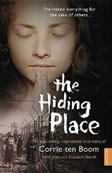
to life. As a result we get to know these people inside and out, and can empathise with them on a very personal level. The book has been my inspiration as a history writer —I want to connect to the past by understanding the thoughts and motivations of the people living at different times, rather than seeing the past as a great tide of events and forces that change history.
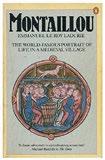
Using 14th-century interrogation records of the inhabitants of Montaillou, a small French village, Le Roy Ladurie brings both their material and mental worlds

I’m a lover of all things Indian and this is an extraordinary novel. The beauty of Mistry’s prose is that he writes gorgeously and movingly in clear language that never over-eggs even the most dramatic events or emotions, but interplays them simply as part of the reality of his characters’ lives. It taught me that the most simple writing can also be the most powerful. As told to Caroline Hutton
Win £50 for your true, funny stories! Go to readersdigest. co.uk/contact-us or facebook.com/readersdigestuk
WHILE WALKING along the pavement in front of his church, our vicar heard the intoning of a prayer that nearly made his collar wilt. Apparently, his five-year-old son and his playmates had found a dead robin. Feeling that a proper burial should be performed, they’d secured a small box, then dug a hole and got ready for the disposal of the deceased.
The minister’s son was chosen to say the appropriate prayers and, with sonorous dignity, intoned his version of what he thought his father always said: “Glory be unto the Father, and unto the Son, and into the hole he goes.”
I want that line used at my funeral!
ROBERT THOMPSON, LancashireMY FATHER went to the supermarket to buy some boneless chicken breasts. But at the shop he was disappointed to find only a few skimpy, prepackaged portions of poultry—so he complained to the butcher in the deli section.
“Don’t worry,” she said. “I’ll pack

some more trays and have them ready by the time you finish shopping.”
A few minutes later, he heard the lady butcher’s voice boom over the speaker: “Will the gentleman who wanted bigger breasts please meet me at the back of the store?”
JANA AITCH, WirralAT THE WEEKEND
I noticed that the cat’s litter tray seemed unusually full. On asking my son if he’d noticed
any unusual “number-one” activity with the cat, he confessed that he’d weed in the cat’s litter tray because he “wanted to know what it felt like to be a cat”.
My darling son is 12. Is there still hope for him?
KAREN HAMILTON, Hertfordshire
I WAS A SHY 22-year-old sitting at a huge dining table with my husband, his manager and work colleagues celebrating their business success. The event had a Dean Martin lookalike singer, wearing a tuxedo and red rose in his pocket.
During one of his songs he made a beeline for me, and got down on one knee with the rose between his teeth. I had no idea what to do next— no one had offered me a rose like that! After a nudge from the woman sitting next to me, I leaned over and took it with my teeth.
I’m not sure what was worse—the look of puzzlement on the singer’s face, or the howls of laughter from everyone at the table....except my husband. SUE SHAW, by email
I WAS ASKING my nursery class about noises animals made, and they got them all correct until we got to a mouse.
“Click,” they said.
It took me a second to realise what they meant...but even three- and fouryear-olds use computers these days!
CARYS MCCAULEY, London
I’M A MEMBER of a local elderlyladies group. One evening we had a quiz to name the stars in Hollywood films during the 1940s, and one of our new members answered nearly every question correctly. Impressed, I asked her how she remembered them from so long ago.
“My dad was in the army during the war and for several years after,” she said. “Every time he came home on leave, he used give me and my brother a few bob and sent us off to the local cinema.”
I smiled. “Did you ever guess why?”
“Only later”, she said, lowering her voice, “when Mum gave me two more sisters and another brother!”
THELMA ANDREWS, DevonAS A CARPET CLEANER I meet all sorts and ages, some very young at heart. Working for one elderly gentleman, I noticed a motoring magazine by his chair.
“So are you still interested in driving?” I enquired.
“Oh, yes”, he replied. “But I’ve had to give it up now. I sold the car this year because of my age.”
“How old are you then?” I asked.
“Ninety eight,” he replied, adding, “but I do have a mobility scooter for shopping.”
“So how far can you go on that?” I asked.
“Well, they say ten miles per hour,” he mused, “but I reckon I can get 12.”
JOHN FOSSEY, London








it pays to increase your
Do you have a sudden hankering for dark lager and sauerkraut? Why not enjoy them with this German-flavoured quiz, to coincide with this year’s Oktoberfest in Munich. All the words originated in Deutschland and have now worked their way into the English language. Raise your stein—prosit! Answers on the next page.
1. angst n
A: annoyance. B: fear or anxiety.
C: complication or problem.
2. hinterland n
A: remote area. B: steep mountain.
C: cold climate.
3. blitz v
A: to go on a drinking binge.
B: talk foolishly. C: attack swiftly.
4. pilsner n
A: fisherman. B: light beer.
C: seat cushion.
5. schmaltzy adj
A: bubbly. B: easily frightened.
C: overly sentimental.
6. spiel v
A: to drop an object. B: tell a secret.
C: speak extravagantly.
7. kitsch n
A: tiny stove. B: flightless bird.
C: tacky decoration.
8. wunderkind n
A: uncontrollable joy. B: child prodigy. C: big family.
9. verboten adj
A: untrue. B: forbidden. C: wordy.
10. putsch n
A: political overthrow. B: baby bear.
C: sweet biscuit.
11. torte n
A: illegal act. B: lawsuit. C: rich cake.
12. kaffeeklatsch n
A: lady’s scarf. B: informal gathering.
C: after-dinner drink.
13. doppelgänger n
A: ghostly double. B: heavy hammer.
C: wave system.
14. ersatz adj
A: incorrect. B: static. C: artificial.
15. zeitgeist n
A: chameleon-like person. B: spirit or trend. C: natural cycle.
1. angst—[B] Fear or anxiety. “My sister was so overcome by angst before the interview that she couldn’t sleep.”
2. hinterland—[A] Remote area. “Our cabin was located in the hinterland, through a distant valley.”
3. blitz—[C] To attack swiftly. “German bombers blitzed London during the Second World War.”
4. pilsner—[B] Light beer with a strong flavour of hops. “There’s nothing like a cold pilsner on a warm day.” (From Pilsen, a city in the Czech Republic.)
5. schmaltzy—[C] Overly sentimental. “The critics hated the play’s schmaltzy dialogue.” (From schmaltz, “animal fat”.)
6. spiel—[C] To speak extravagantly. As a noun, a strong sales pitch. “The estate agent began to spiel, assuring us that this was the perfect home.”
7. kitsch—[C] Tacky decoration. “My kiwi bird collection is the ultimate in kitsch.”
8. wunderkind [B] Child prodigy. “The software company was run by a wunderkind
who was younger than most of his employees.”
9. verboten—[B] Forbidden. “The wearing of flip-flops is verboten at my daughter’s school.”
10. putsch—[A] Political overthrow. “A rebel army planned a putsch against the dictator.”
11. torte—[C] Rich cake. “That bakery is known for its tortes and strudels.”
12. kaffeeklatsch—[B] Informal gathering. “There was a kaffeeklatsch at the club after each match.” (From kaffee, “coffee”, and klatsch, “gossip”.)
13. doppelgänger—[A] A ghostly double of a living person; a lookalike. “The artist said that seeing his own doppelgänger caused him to faint.”
14. ersatz—[C] Artificial. “The ersatz intellectuals read poetry in a local coffeehouse.”
UnChAnCy: something that’s not safe to meddle with.
Alternative suggestions: “somebody who enters competitions but never wins.” “to sack the chancellor.”
“Having an unfortunate monopoly on the undesirable community chest cards.”
15. zeitgeist—[B] Spirit or trend. “The school’s zeitgeist embraced personal responsibility and open-mindedness.”
VOCABUlARy
RATInGS
9 & below: a small refreshment
10–12: a half-pint
13–15: a full stein



A maritime travel series that follows Timothy Spall and his wife Shane navigating the waters in their trusty Dutch barge The Princess Matilda as they travel the length and breadth of the British Isles.
Collection of 3 DVD releases

Somewhere at Sea, Back at Sea and All at Sea available for pre-order (out on 07/11/2016)
167494 Somewhere at Sea
RRP: £12.99 Selling Price: £9.99
166456 Back at Sea
RRP: £12.99 Selling Price: £9.99
166457 All at Sea
RRP: £12.99 Selling Price: £9.99













(Please quote RDP043 when ordering) ONLY £9.99 EACH
HOW TO ORDER
online at shop.readersdigest.co.uk or by telephone on 0844 332 8080


Challenge yourself by solving these puzzles and mind stretchers, then check your answers on page 139.
1-2-3 Go
Find a way to draw a continuous loop that follows each line segment once and only once. You must trace segments in numerical order; that is, “1, 2, 3, 1, 2, 3…” As you move along, every corner and every intersection you pass is the beginning of a new segment. It’s OK for one part of your solution to meet or cross another at the intersections.
In each of the three-by-three grids separated by the dark bands, the numbers have the same relationship to one another. Can you figure out what the missing number is?
Assuming that all the lines meet at right angles and that each segment measures a whole number of units, what is the area of this figure?
Here are three piggy banks, one of which contains £10. The other two contain £15 and £20. However, all three are labelled incorrectly. You open piggy bank B and find £20 inside. On that basis, can you identify the contents of each one?
The puzzle pieces below could be used to make the hexagon shape to their left. It wouldn’t be necessary to rotate or flip any of the pieces, but there would be one shape left over. Which one?
Hint: Cutting out the pieces and assembling the hexagon is one way to solve this problem, but there’s also another way.
* Entry is open only to residents of the UK, Channel Islands, Isle of Man and Republic of Ireland aged 18 or over. It is not open to employees of Vivat Direct Limited (t/a Reader’s Digest), its subsidiary companies and all other persons associated with the competition.
4. If you read each row as a threedigit number, the numbers in the two upper rows will add up to the sum in the bottom row.
area oF interest B: 74.
We’ve seen first-hand that piggy bank B contains £20. Piggy bank A can’t contain £10 because that would mean it was correctly labelled. It must, therefore, contain £15, leaving piggy bank C to contain £10.
All but one of the pieces contain an equal number of upwardpointing triangles and downwardpointing triangles. The hexagon also has an equal number of each. The triangular piece would upset this balance if it were used, so it must be the imposter.
£50 prize qUestion
answer published in the november issue
What word might appear in the missing space? Brown
the first correct answer we pick on september 29 wins £50!* email excerpts@ readersdigest.co.uk
answer to septemBer’s prize qUestion
(8+5) x 7 x (6+4) = 910
there are
13 other possible solutions.
anD the £50 Goes to… colin havercroft, kingston upon hull
Win £50 for every reader’s joke we publish! Go to readersdigest. co.uk/contact-us or facebook.com/readersdigestuk
GOD SAID, “Adam, I want you to do something for me.”
Adam said, “Gladly, Lord, what do you want me to do?”
God said, “Travel down into that valley.”
Adam said, “What’s a valley?”
God explained it to him. Then God said, “Cross the river.”
Adam said, “What’s a river?”
God explained that to him and then said, “Go over to the hill.”
Adam said, “What’s a hill?”
So God explained to Adam what a hill was. He told Adam, “On the other side of the hill you’ll find a cave.”
Adam said, “What’s a cave?”
After God explained, he said, “In the cave you’ll find a woman.”
Adam said, “What’s a woman?”
So God explained that to him too. Then God said, “I want you to reproduce.”
Adam said, “How do I do that?”
God first said (under his breath), “Strewth!” and then, just like everything else, God explained that to Adam as well.
So Adam went down into the valley, across the river, over the hill, into the cave and found the woman. Then, in about five minutes, he was back.
God, his patience wearing thin, said angrily, “What is it now?”
Adam said, “What’s a headache?”
BILL BOYLE, FalkirkLAST NIGHT I blew £5,000 on a reincarnation seminar. I figured, What the hell, you only live once.
COMEDIAN RONNIE SHAKESI LIKE ESCALATORS because they can never break. They can only become stairs. There should never be an “Escalator Temporarily Out of Order” sign, only a “Escalator Temporarily Stairs” sign. SEEN ONLINE
WHEN NASA started sending up astronauts, they quickly discovered that ballpoint pens would not work at zero gravity.
To combat this problem, Nasa scientists spent a decade and millions of dollars developing a pen that
wrote at zero gravity, upside down, underwater, on almost any surface including glass, and at temperatures ranging from below freezing to 300C.
The Russians used a pencil.
SEEN AT GIZMODO.COM
I STOPPED AT A FRIEND’S HOUSE the other day and found him stalking around with a fly swatter. When I asked if he was getting any flies, he answered, “Yeah, three males and two females.”
Curious, I asked how he could tell the difference. He said, “Three were on a beer can and two were on the phone.”
SEEN AT DAILYMAIL.CO.UK
A DEVOUT COWBOY had lost his favourite Bible while out on the ranch. He searched long and hard but couldn’t find it.
Later that day a horse turned up with the Bible in his mouth, and dropped it at the cowboy’s feet.
The cowboy couldn’t believe his eyes. He looked to the sky, raised his arms and shouted, “Praise be to the Lord, it’s a miracle!”
“Not really,” said the horse. “Your name and address is written on the inside cover.” TERRY SANGSTER, by email
A MAN AT A RESTAURANT flagged down the waiter and said, “Excuse me, I have a bee in my soup.”
The waiter replied, “Yes, sir. Didn’t you order the alphabet soup?”
SEEN ONLINE
There’s nothing like good, honest celebration (seen at buzzfeed.com).




ONE-ARMED BUTLERS—they can take it, but they can’t dish it out.
COMEDIAN TIM VINEFOR SEVERAL YEARS a man was having an affair with an Italian woman. One night, she confided in him that she was pregnant. Not wanting to ruin his marriage, he paid her a large sum of money go to Italy and have the child in secret. If she stayed in Italy to raise the child, he’d also provide child support until the child turned 18.
She tearfully agreed, but asked how to let him know when the baby was born. To keep it discreet, he told her simply to send him a postcard, and write “Spaghetti” on the back. He would then arrange for the childsupport payments to begin.
One day, about nine months later, he came home to his confused wife. “Peter,” she said, “you received a very strange postcard today.”
“Oh, just give it to me and I’ll explain it later,” he said.
The wife watched as her husband read the card, turned white and fainted. On it was written: Spaghetti, Spaghetti, Spaghetti, Spaghetti, Spaghetti. Three with meatballs, two without. Send extra sauce.
HEIDI CLARK, Yorkshire
MY DAD IS IRISH and my mum is Iranian, which meant that we spent most of our family holidays in customs.
COMEDIAN PATRICK MONAHAN
VELCRO...what a rip-off!
SEEN AT LAFFGAFF.COM
The charming @OhWonka makes an art form of condescension. We challenge you not to relate to his musings, as seen on Twitter:
“Admit it, you sometimes listen to other strangers’ conversations and mentally give your opinion.”
“I wanna be nice, but everyone annoys me.”
“This kale salad tastes like I’d rather be fat.”
“Wow, thank you guy on Facebook I went to school with and haven’t spoken to in 12 years. You really changed my mind about this upcoming election.”
“I’m not saying I have a hangover, but I can hear light right now.”

Think of a witty caption for this cartoon—the three best suggestions, along with the cartoonist’s original, will be posted on our website in midOctober. If your entry gets the most votes, you’ll win £100 and a framed copy of the cartoon, with your caption.
Submit to captions@readersdigest.co.uk or online at readersdigest.co.uk/caption by October 7. We’ll announce the winner in our December issue.

At last, some success for the professionals! Cartoonist Steve Jones attracted a full 68 per cent of the vote with “It’s not the kind of flexibility we’re looking for”, leaving all other rivals for dust. It just goes to show that you can’t write the experts off, although I’m sure our readers are plotting their revenge…

The broadcaster on taking over as host of one of Britain’s best-loved shows, and why she has so much energy to spare.
• New Ways to Beat Breast Cancer
• “I Remember”: Alfred Molina
• The Future of Flight
• Best of British: Bakeries
• 100-Word-Story Competition
We chat to lovely lady Susan Calman
WHAT’S THE BEST PART OF YOUR CURRENT TOUR OR SET?
I tell a story about how I auditioned for the role of a lover of someone quite famous, but got turned down because I’m too short. That’s probably one of the best things that’s ever happened to me.
HAVE YOU FOUND ANY PARTS OF THE COUNTRY TO BE FUNNIER THAN OTHERS?
I have a particular fondness for Yorkshire. Audiences there are like Glaswegian audiences in that they tell you immediately if they don’t enjoy what you’re doing. But when they do enjoy it…my goodness do they enjoy it!
WHAT’S YOUR MOST MEMORABLE HECKLE EXPERIENCE?
Someone in the middle of a show heckled, “I love your shoes.” Very rarely do I get complimented on what I’m wearing, so I was delighted.
ANY FUNNY TALES ABOUT A TIME YOU BOMBED ON STAGE?
Very early on in my career, I did a gig in a pub in Ayre. A fight broke out, glasses were thrown, but I carried on. I thought you just had to keep going.


WHO’S YOUR COMEDY INSPIRATION?
Victoria Wood was the reason I wanted to get into comedy. I remember seeing her perform— she was amazing and funny and so precise. I wanted to be her friend.
IF YOU WERE A FLY ON A WALL, WHOSE WALL WOULD YOU BE ON?
Liza Minnelli. I think she’s had an amazing life and I bet she’s got some stories.
Susan is performing at book festivals throughout this month. Visit susancalman. com for information and to book tickets.

























The cordless AirRam K9 is the 4x4 upgrade of the original AirRam, complete with extra tough features. Designed not only for great cleaning performance, but to withstand the extra strain pet hair can place on a vacuum cleaner – clogging the mechanism and making it wear out faster.
Tougher
AirRam K9 is specially designed to lift embedded hair from carpet bres, but minimise the amount of hair that gets wrapped around the brush-bar, so less cleaning for you.
Stronger
The K9 is strengthened by zinc alloy components, to resist the wear and tear caused by the toughest cleaning environments.
Sweeter
And, it features re llable oral scented lters to leave your room smelling clean and fresh.
All the great features of the original AirRam
Added to that are all the great features that have made the Gtech AirRam so popular: Mains powered upright vacuum performance†; Lightweight (3.8kg); 40 minutes run-time*; 4-hour charge-time; ‘one button’ simplicity and easy one-click assembly.


Power, performance, simplicity

High performance cordless pet vacuum without stopping, unplugging or changing
Without the weight or cord holding you back, you can glide from carpet to hard- oor without stopping, unplugging or changing any settings.

Suitable for all domestic pets, or just the busiest homes, the K9 compresses the hair and dirt into bales. A removable tray lifts out, allowing you to drop the debris into the bin, without the dust cloud you can get when you empty a cylinder.







We all dearly love our four legged friends, but cleaning up after them makes vacuuming even more of a chore. Stubborn hair embedded in the carpet, the brush bar choked up… not to mention the smell.


































